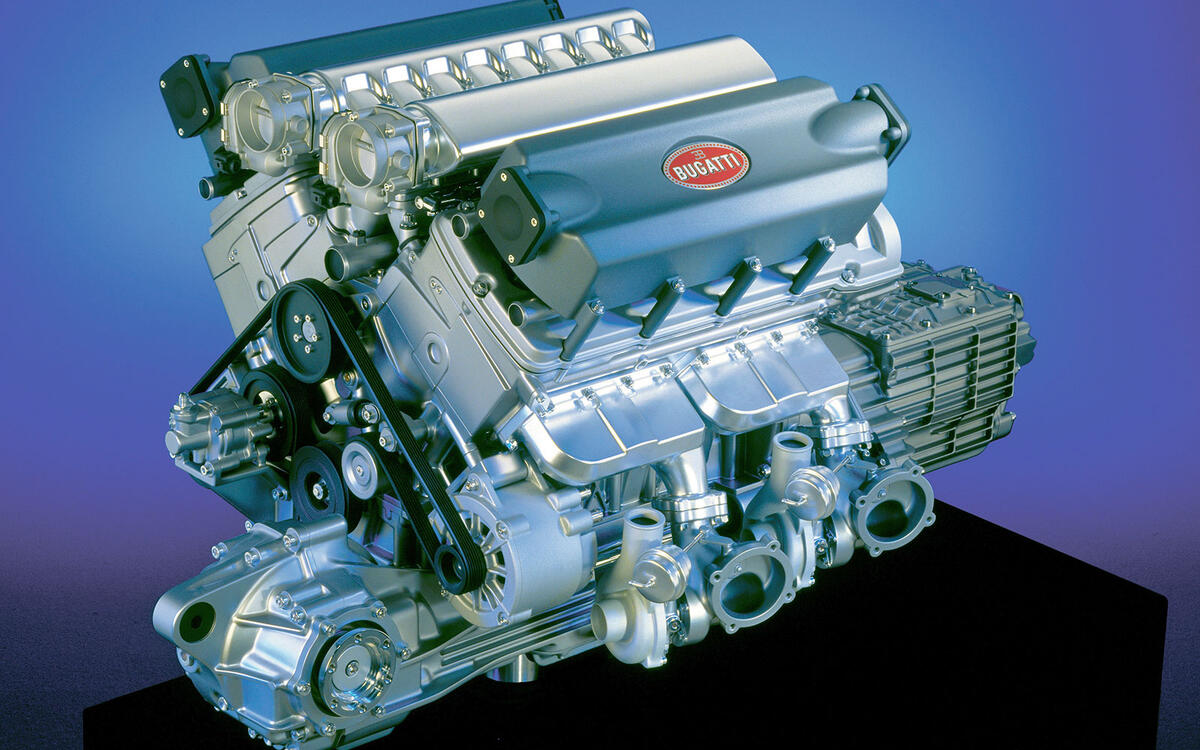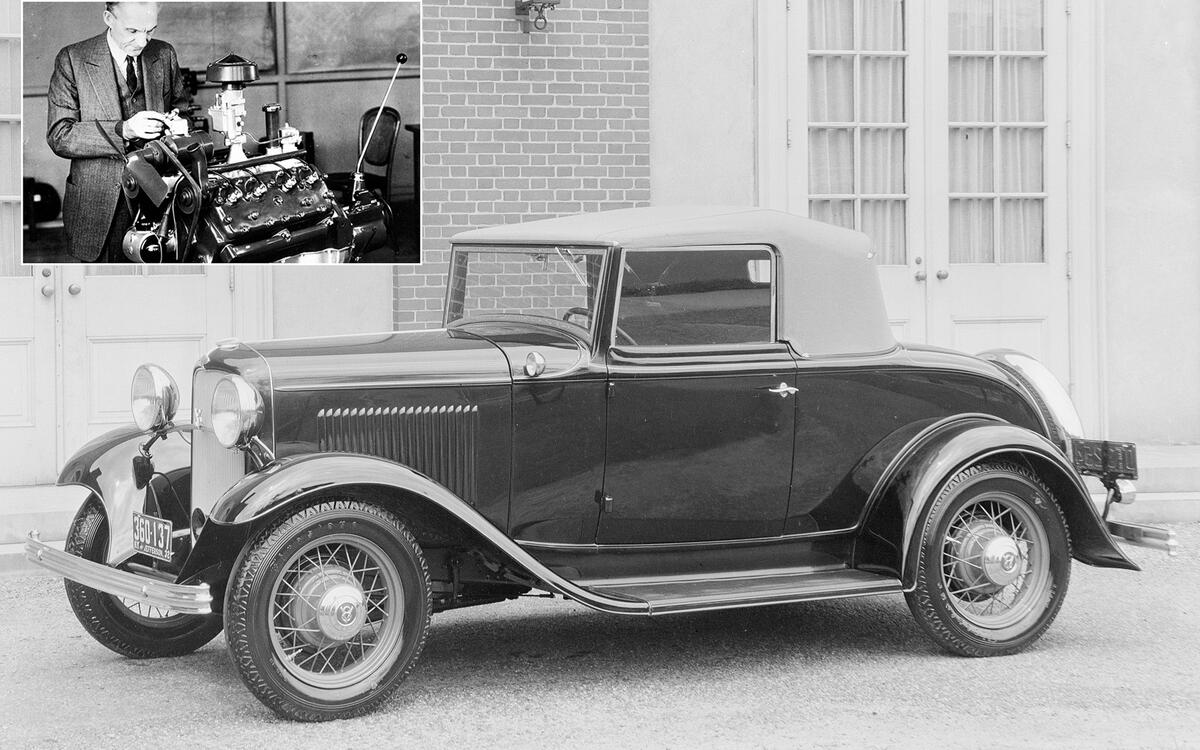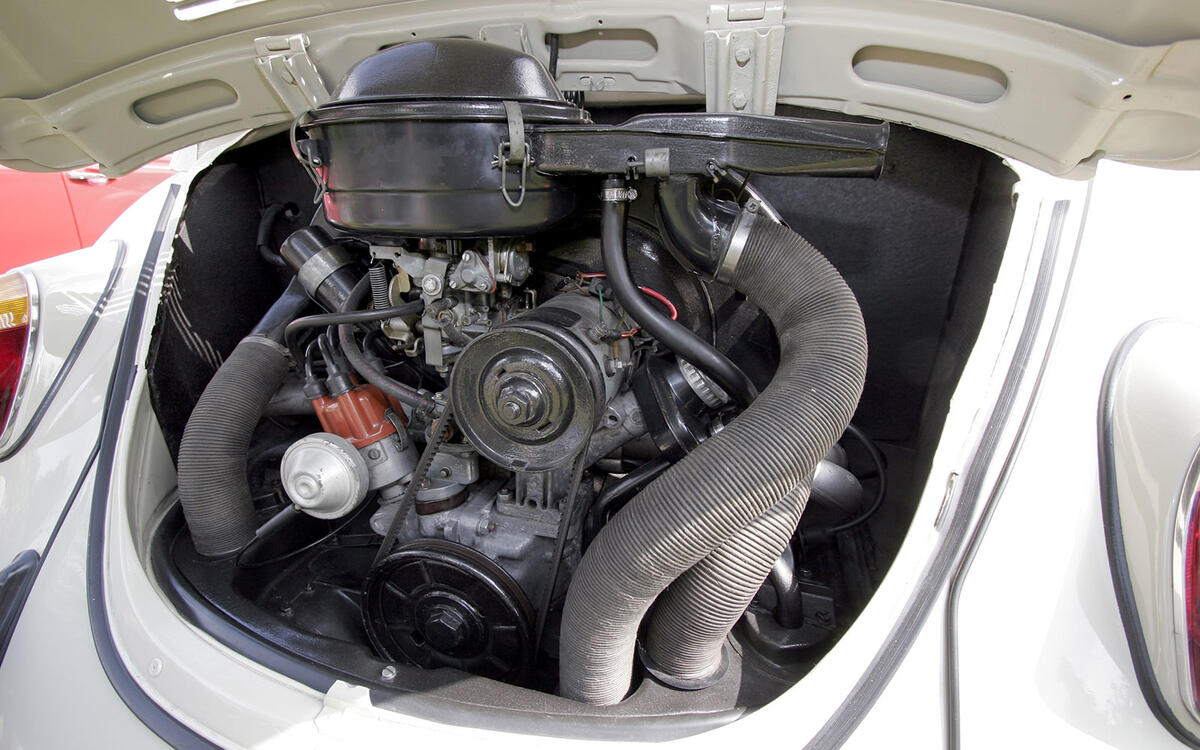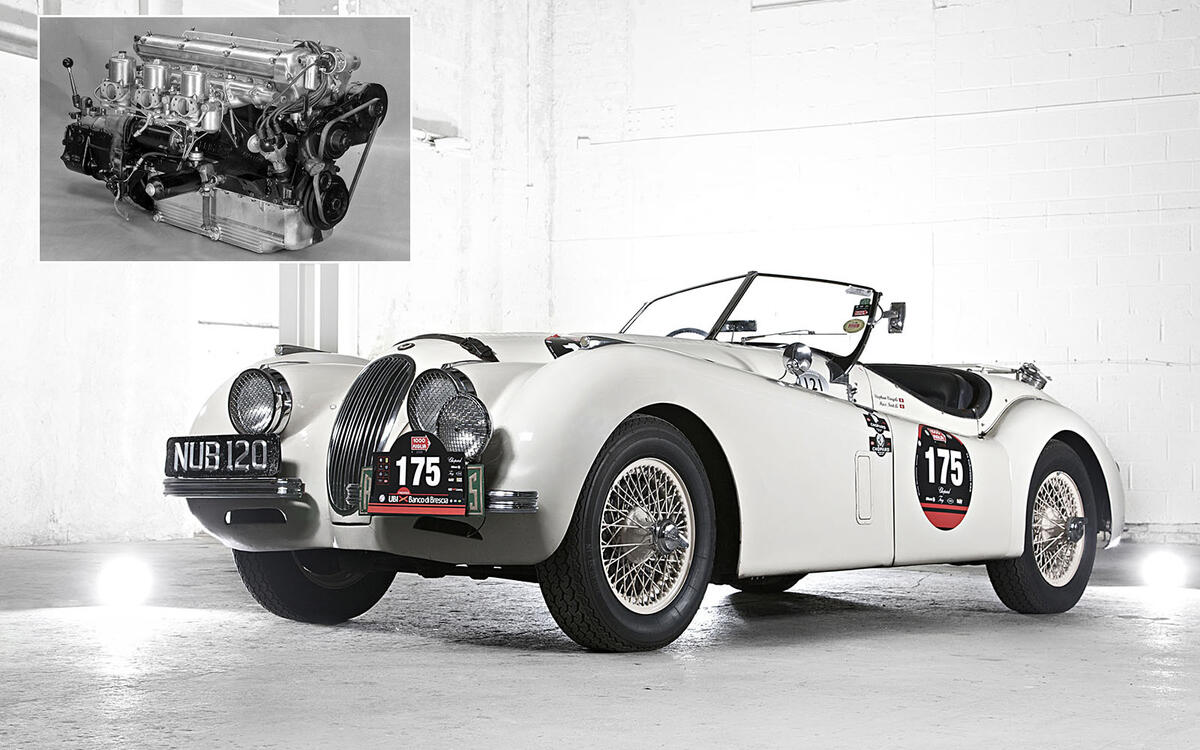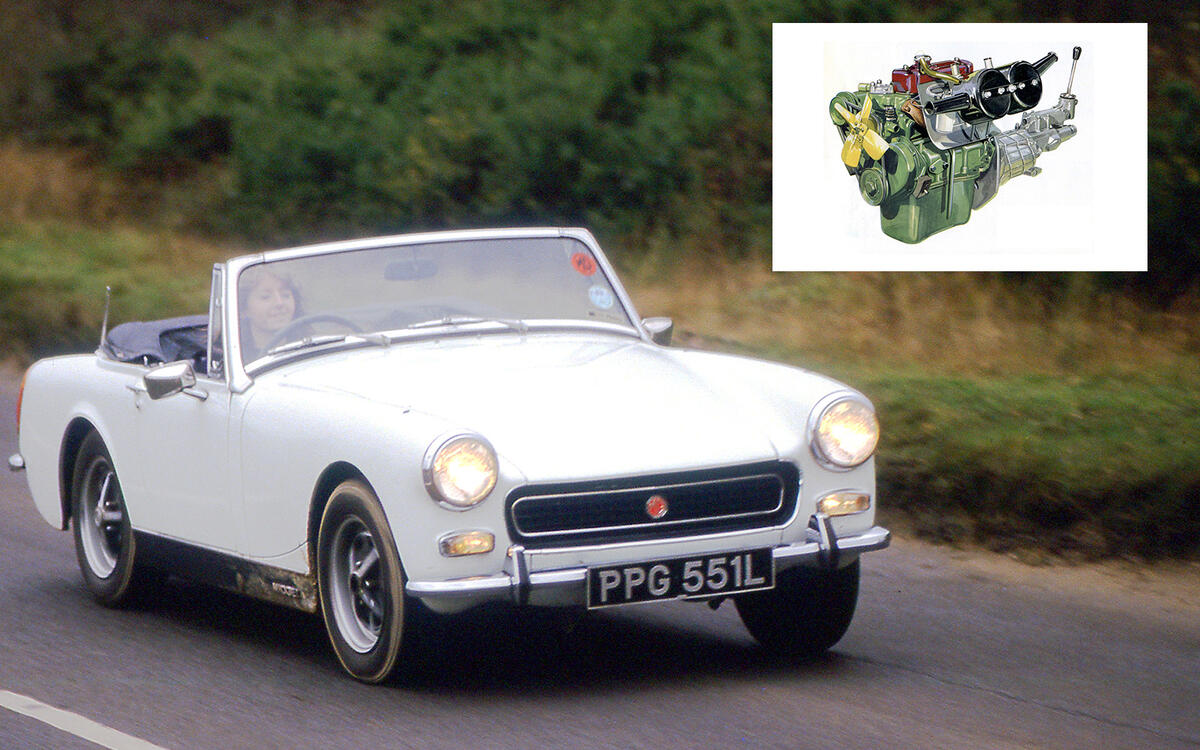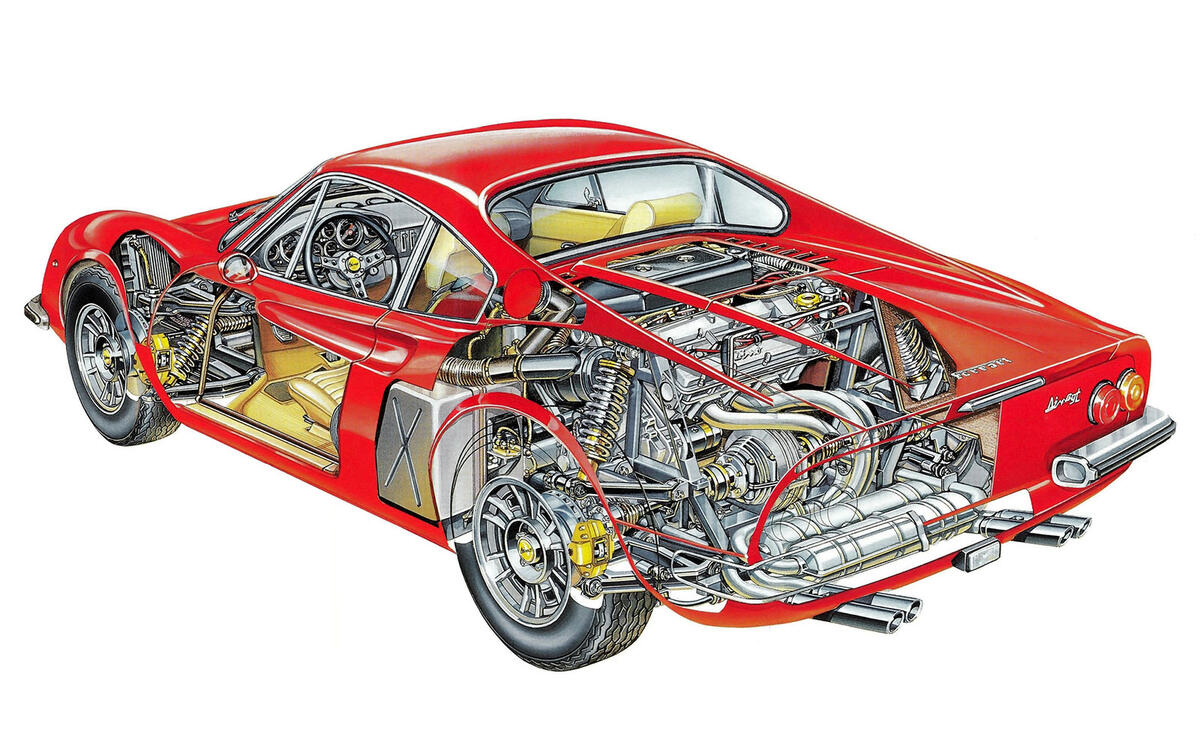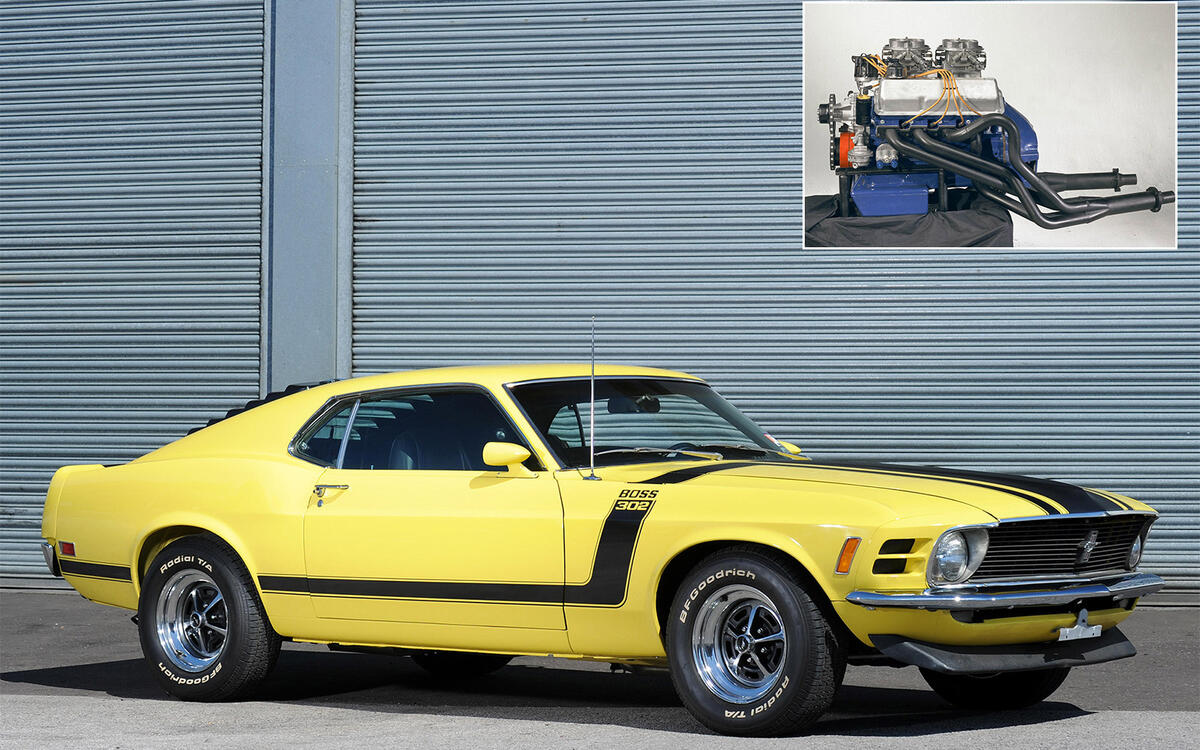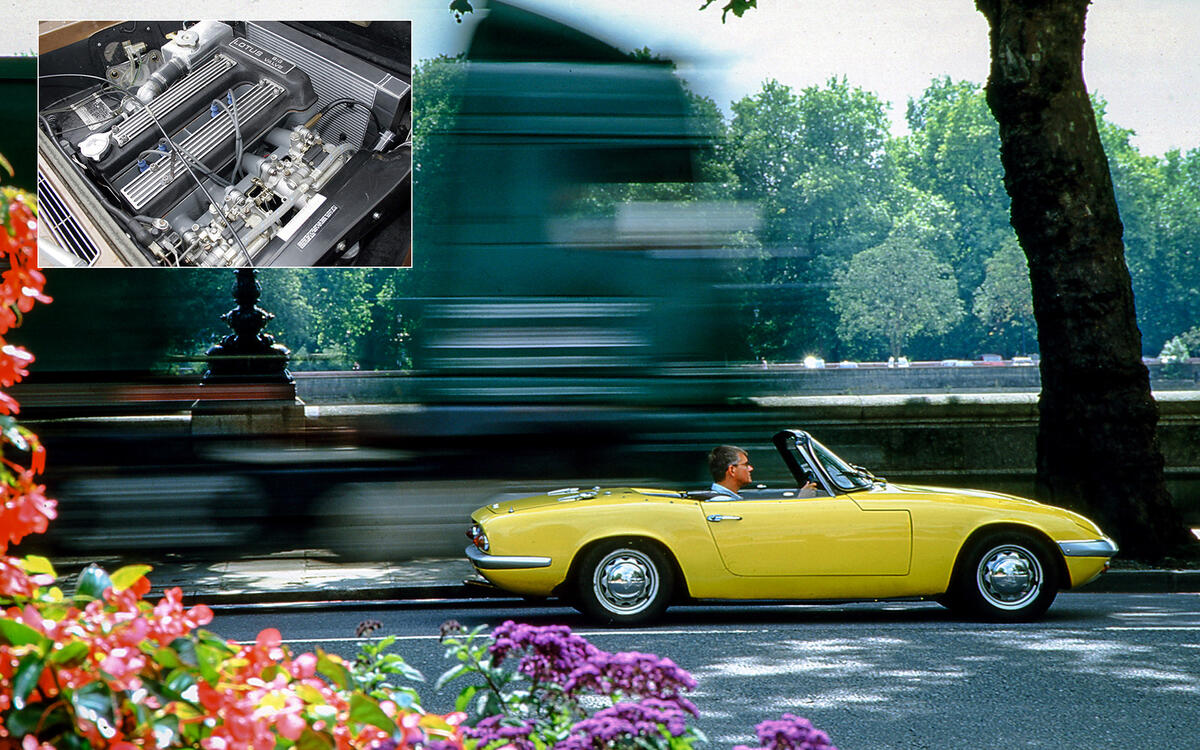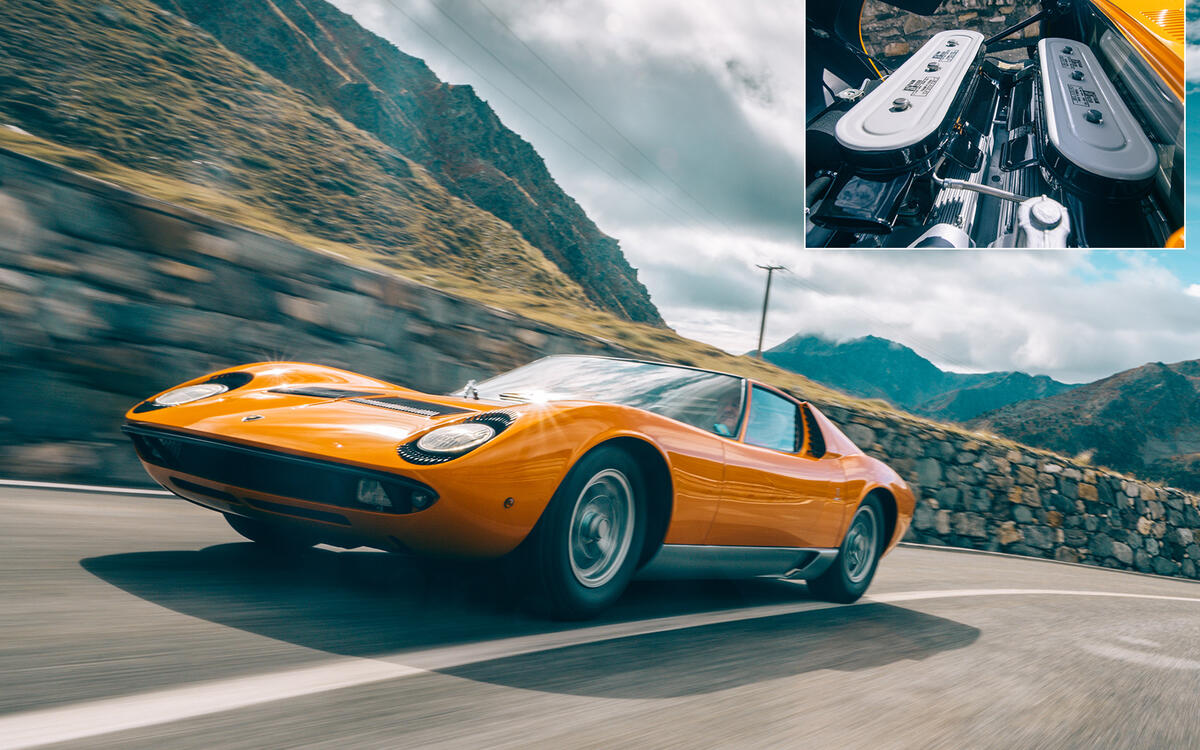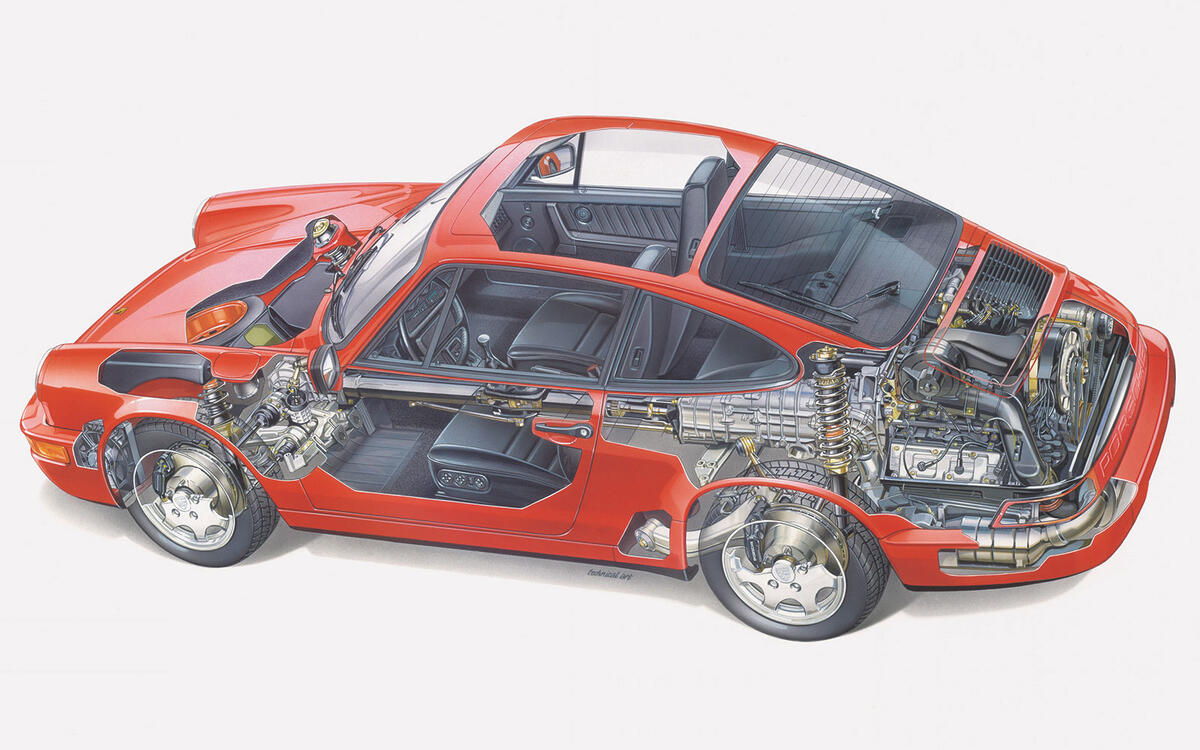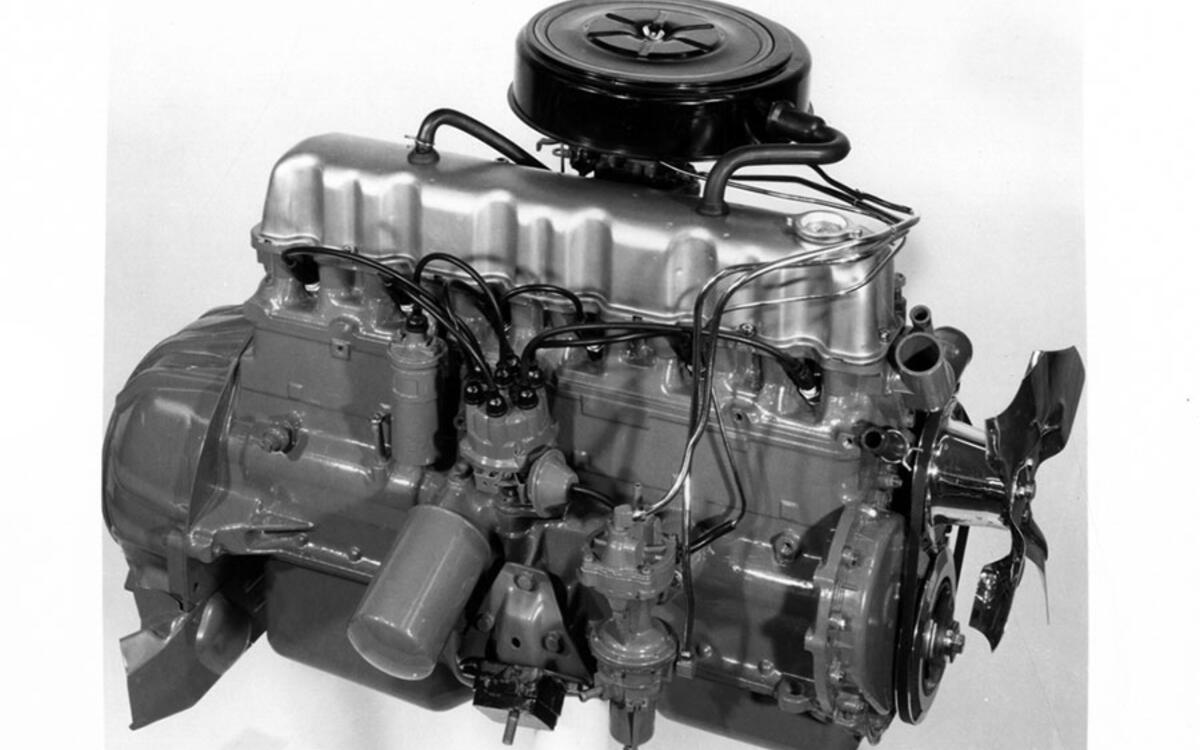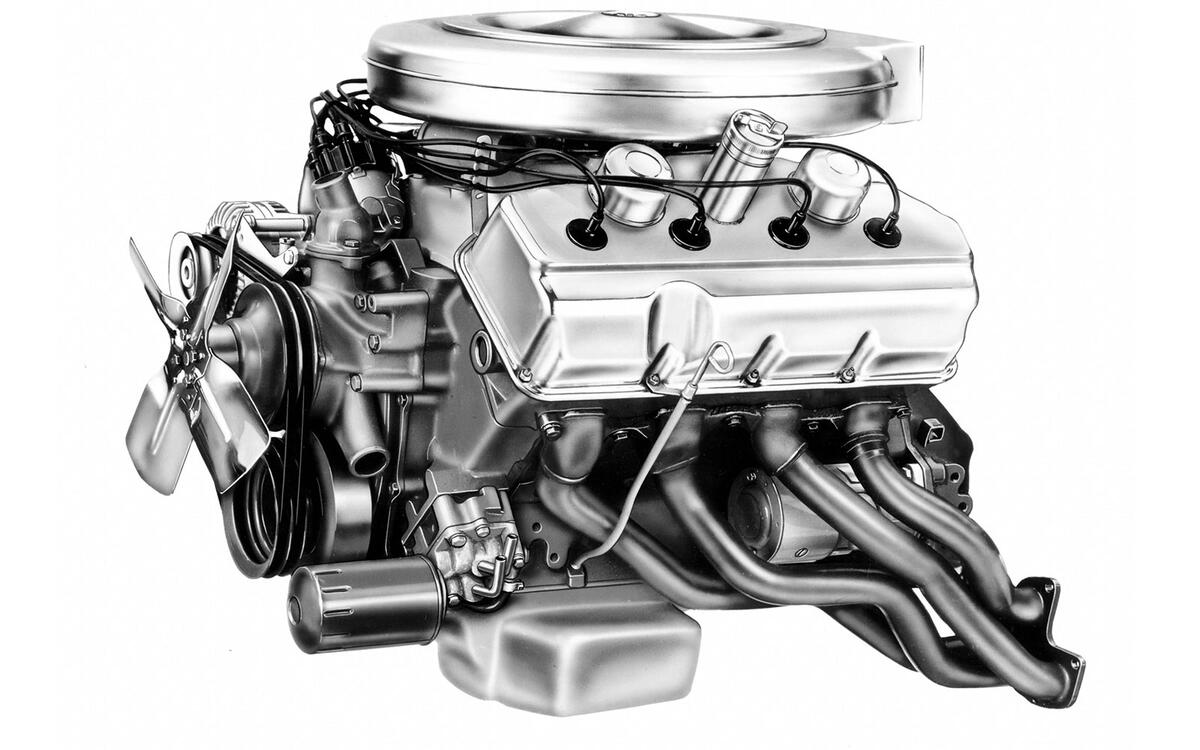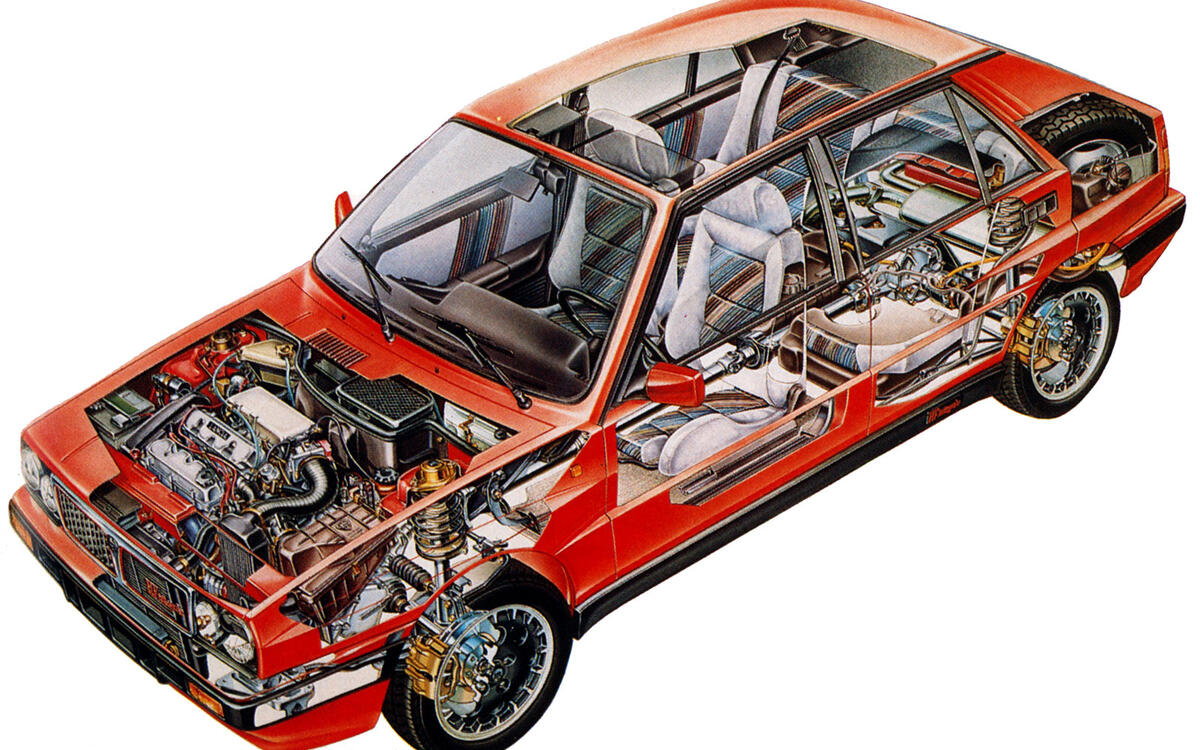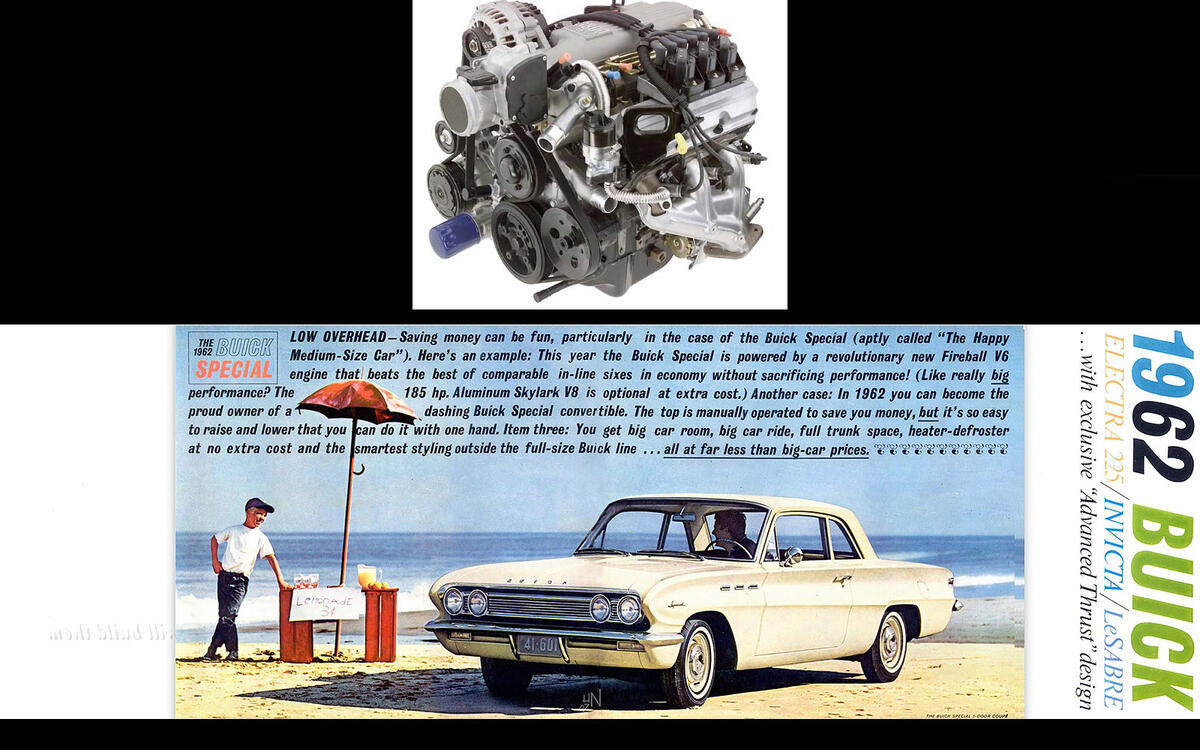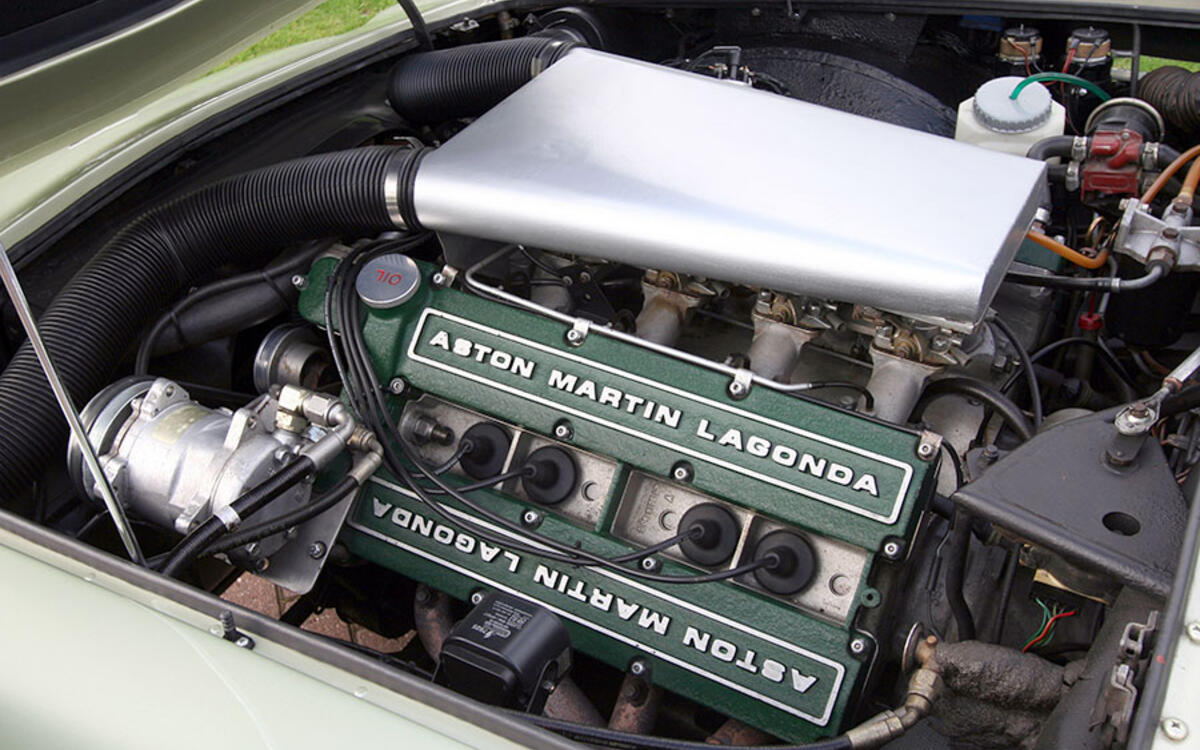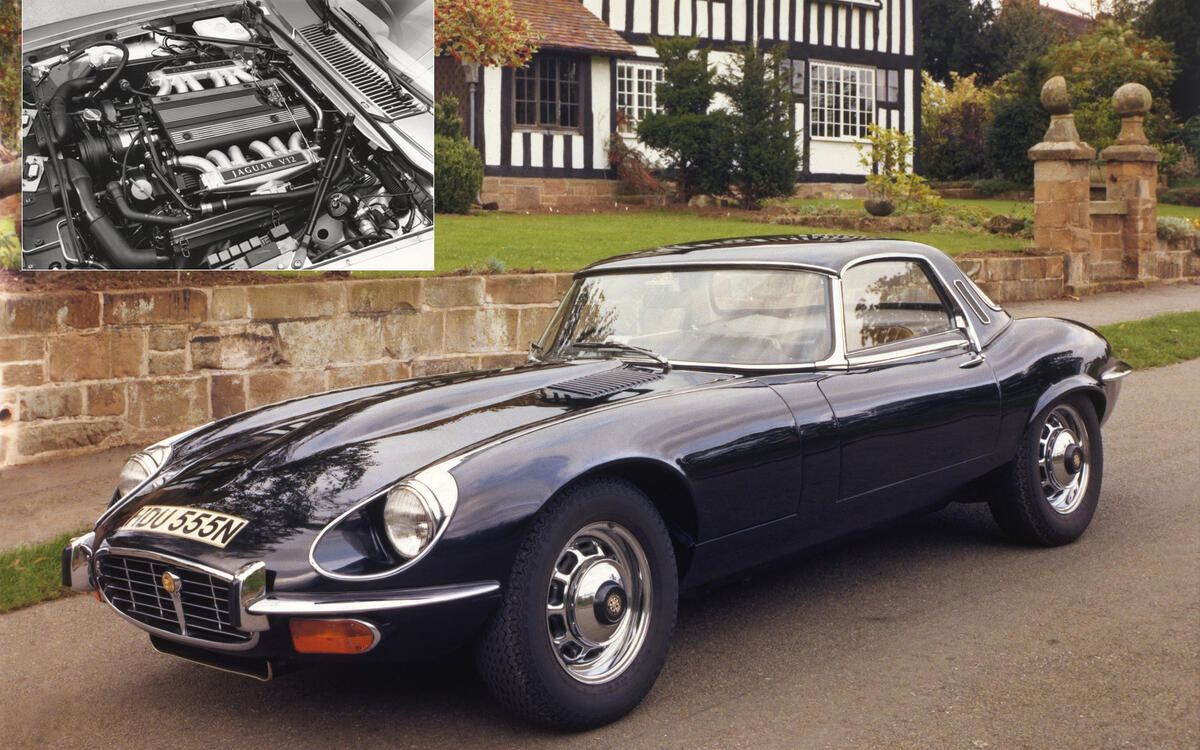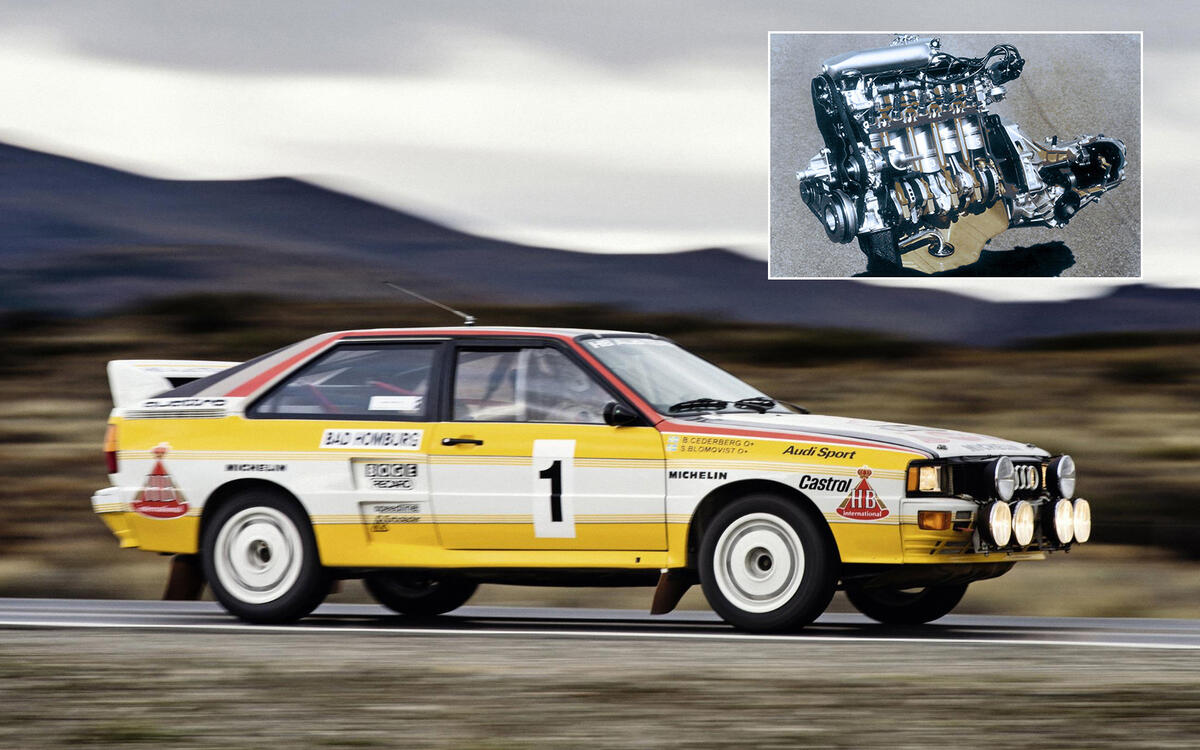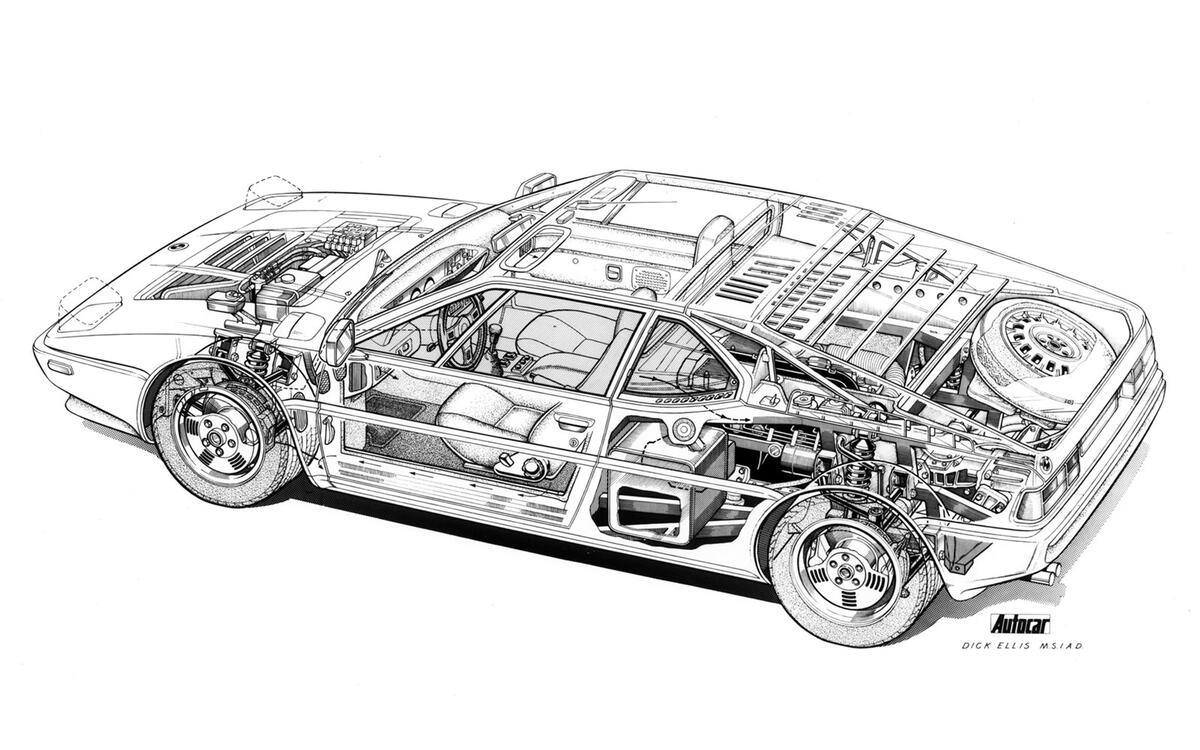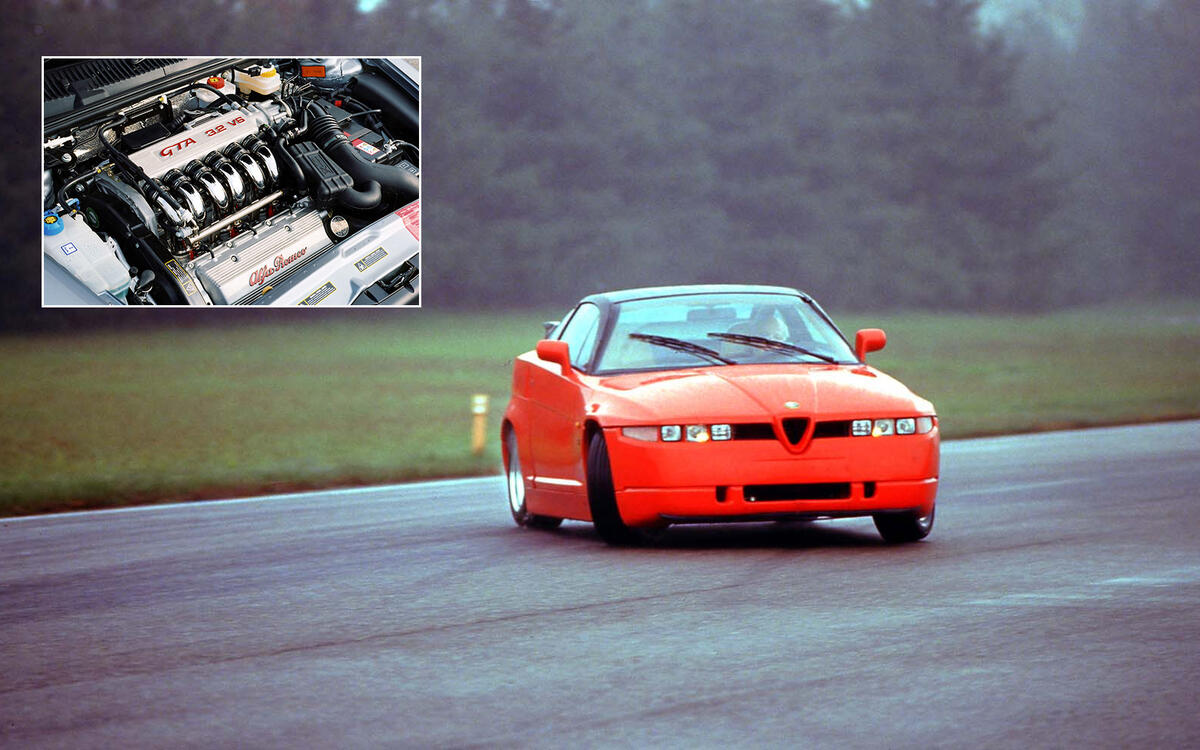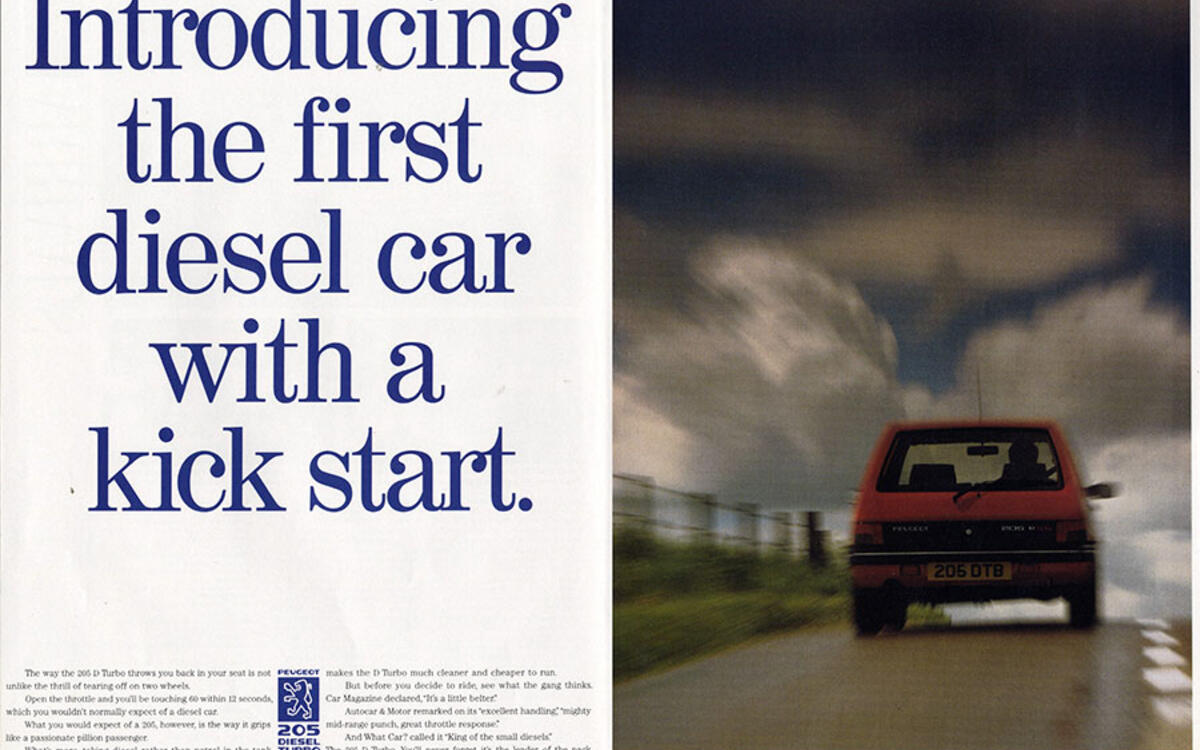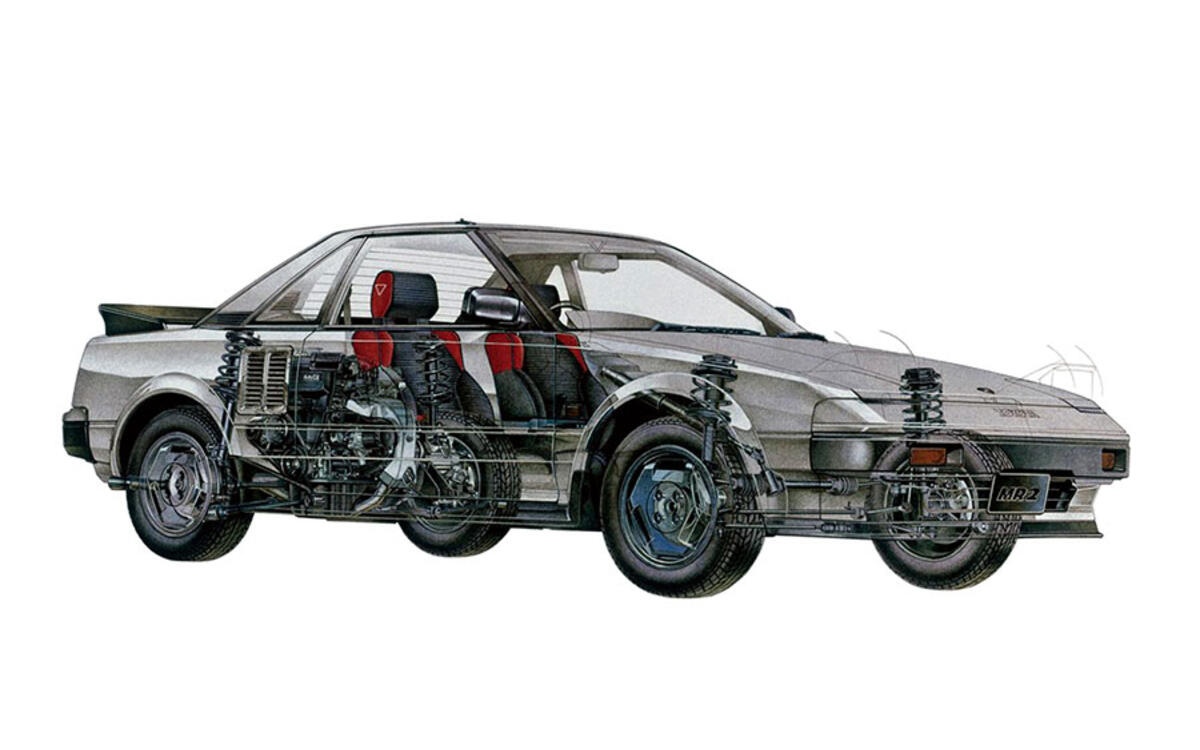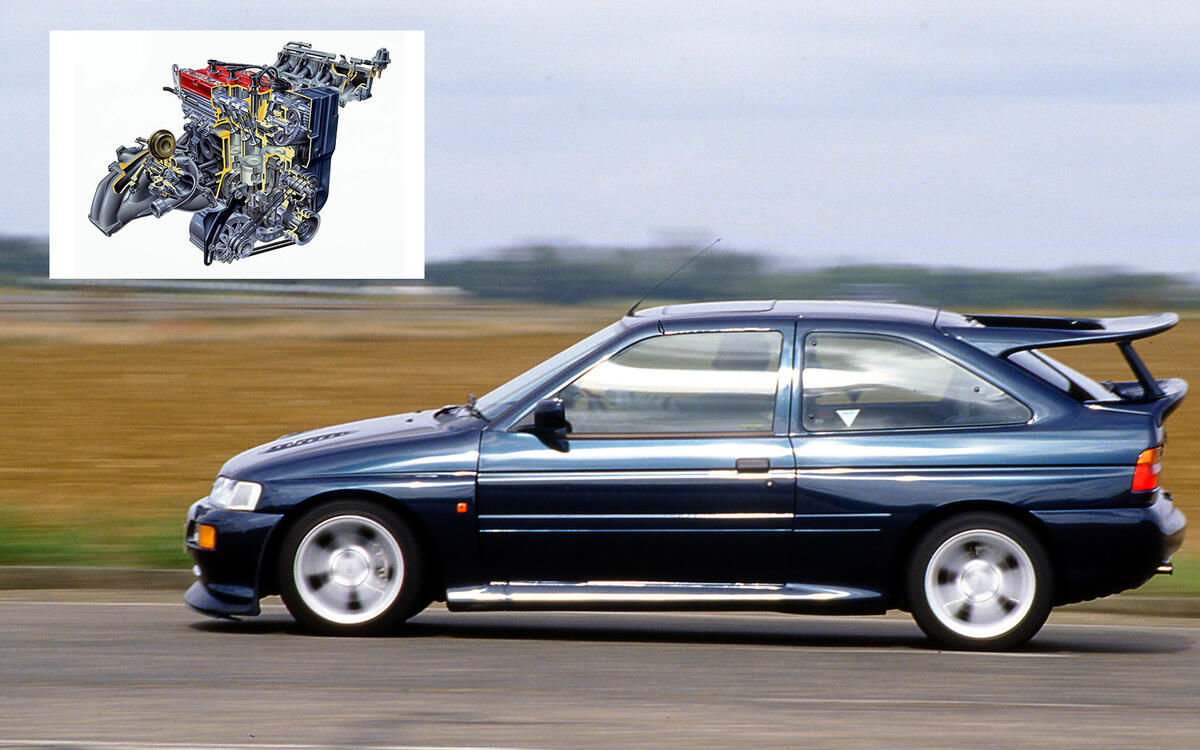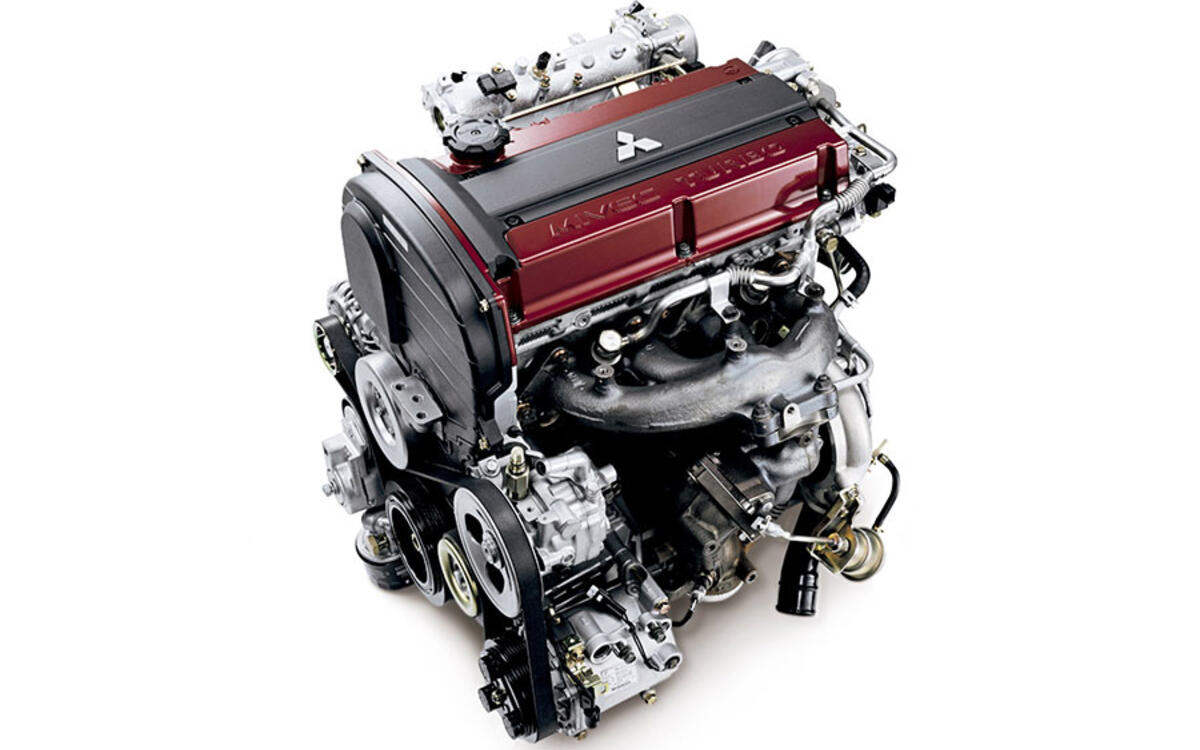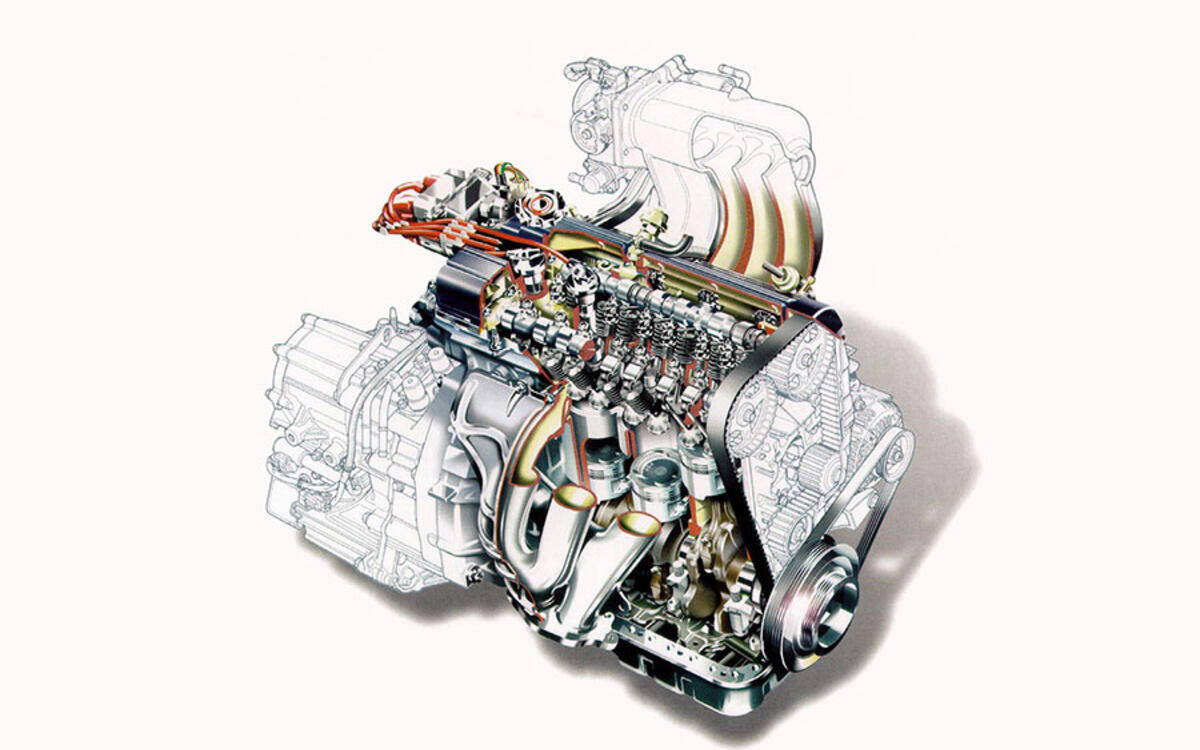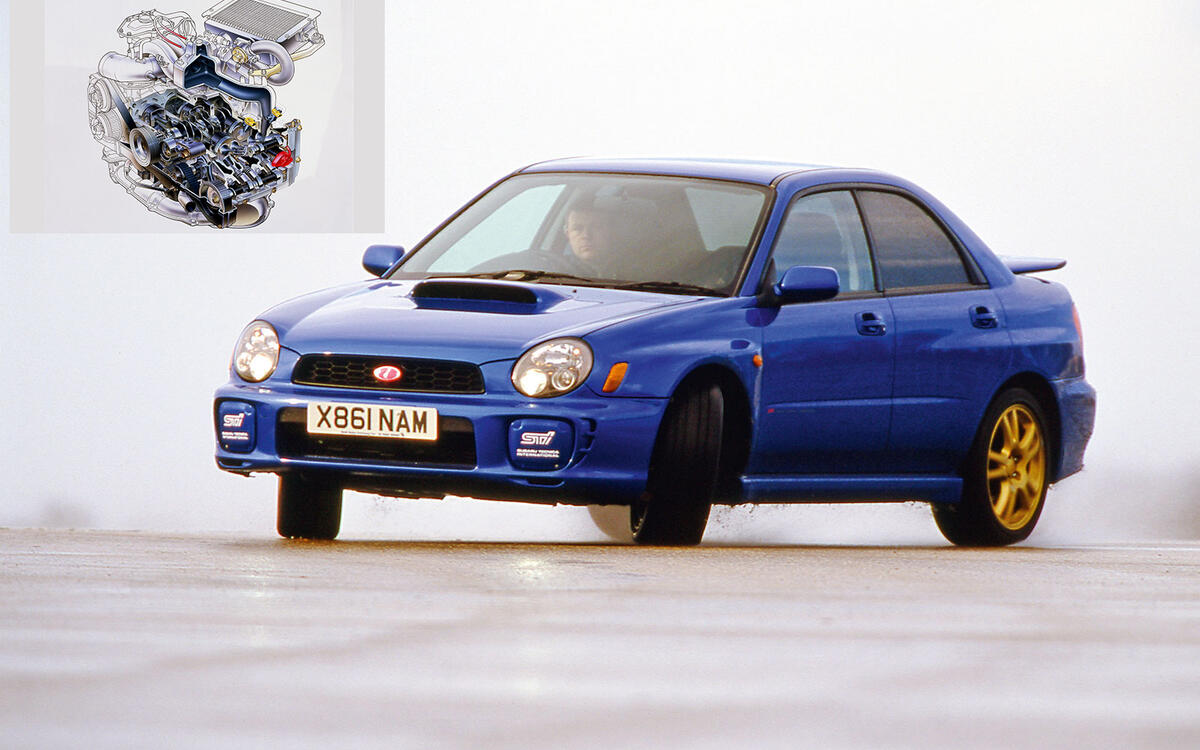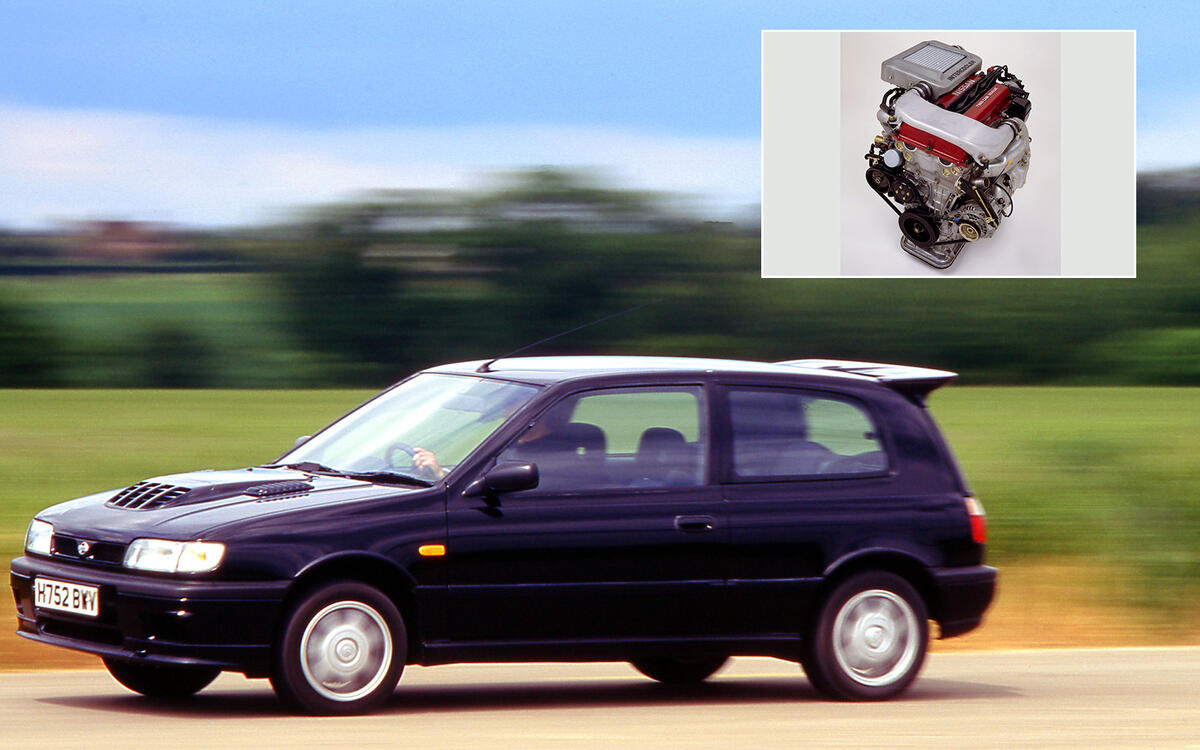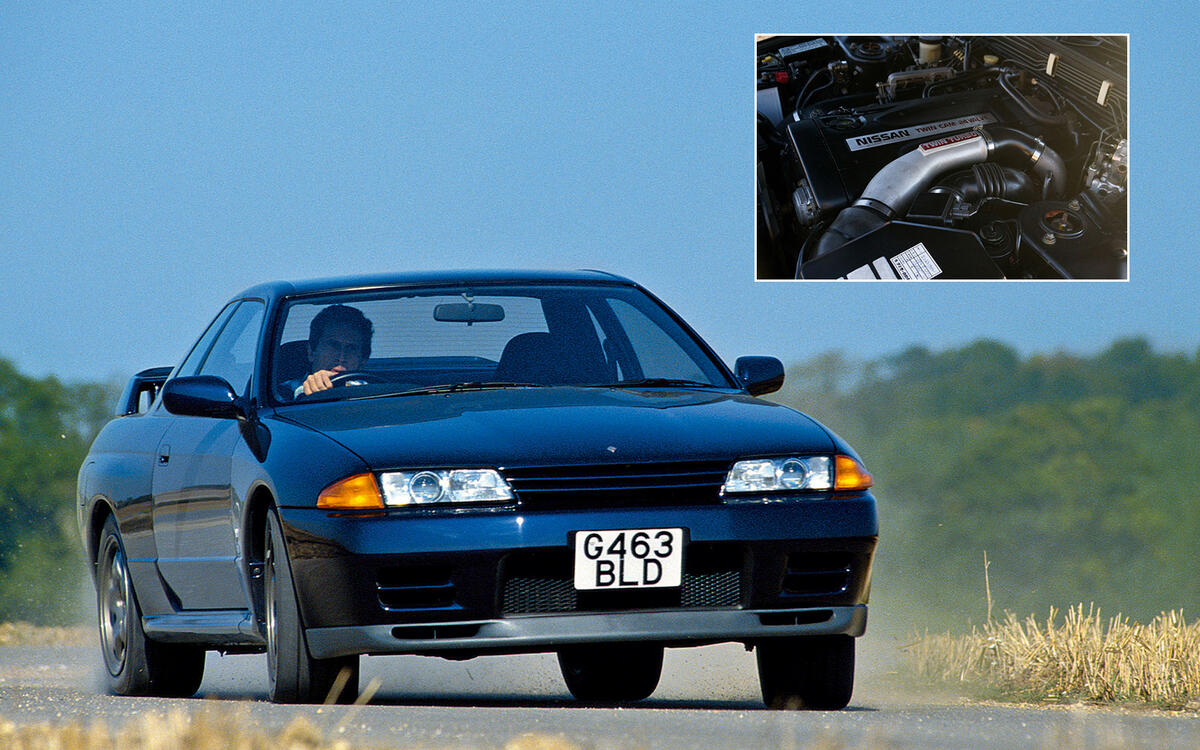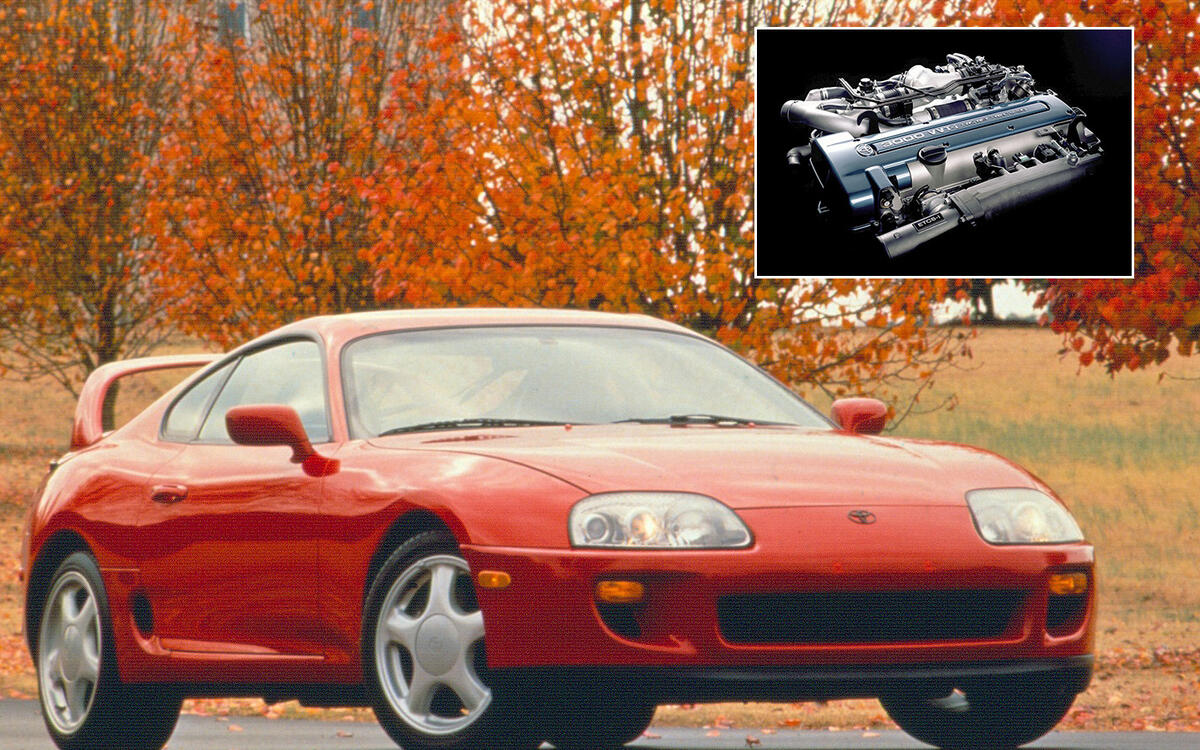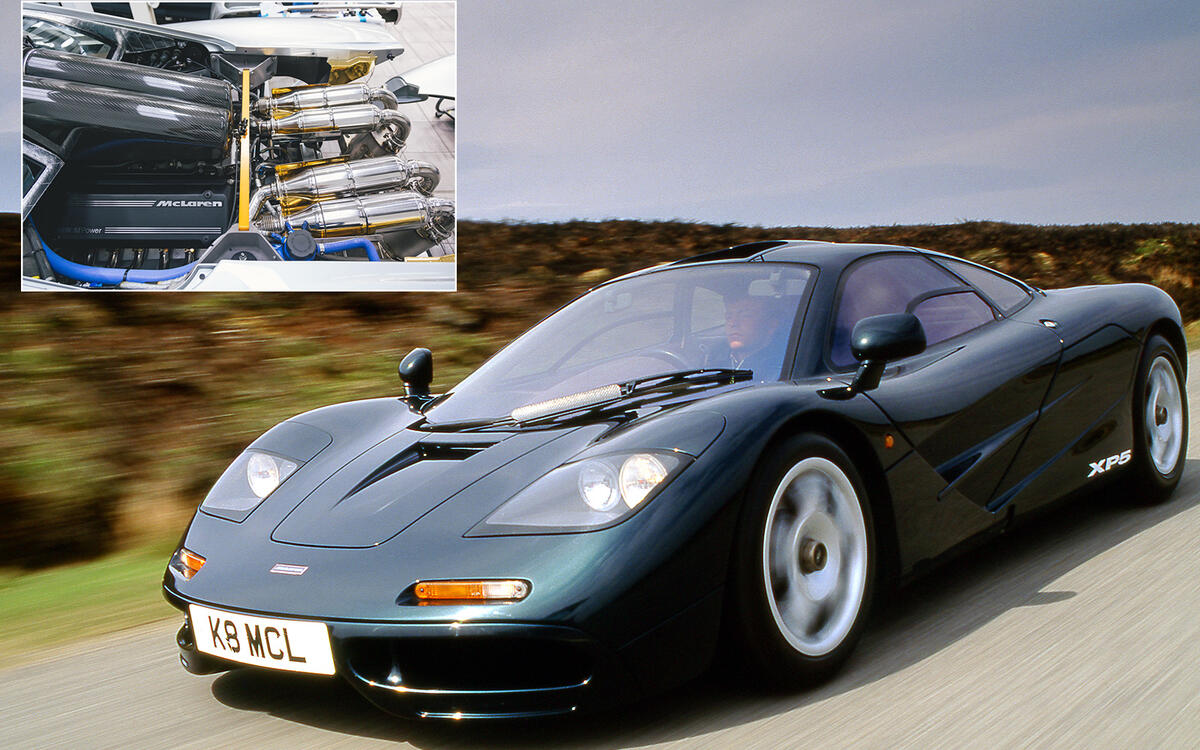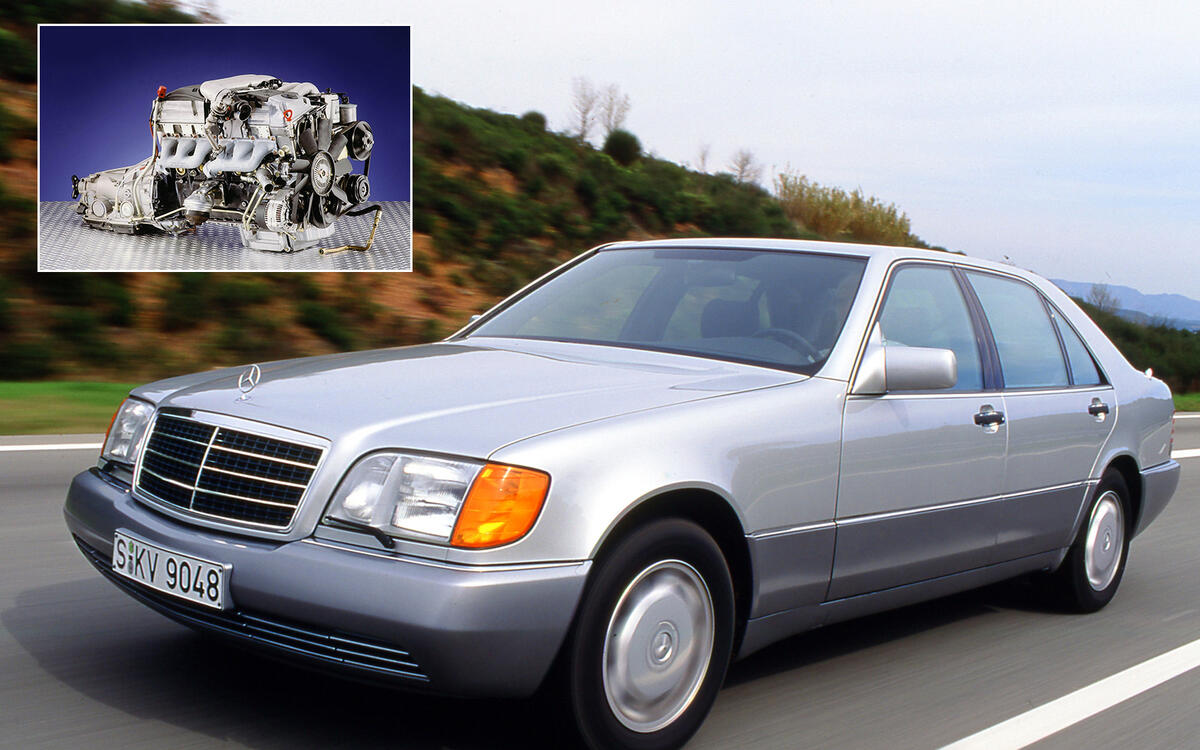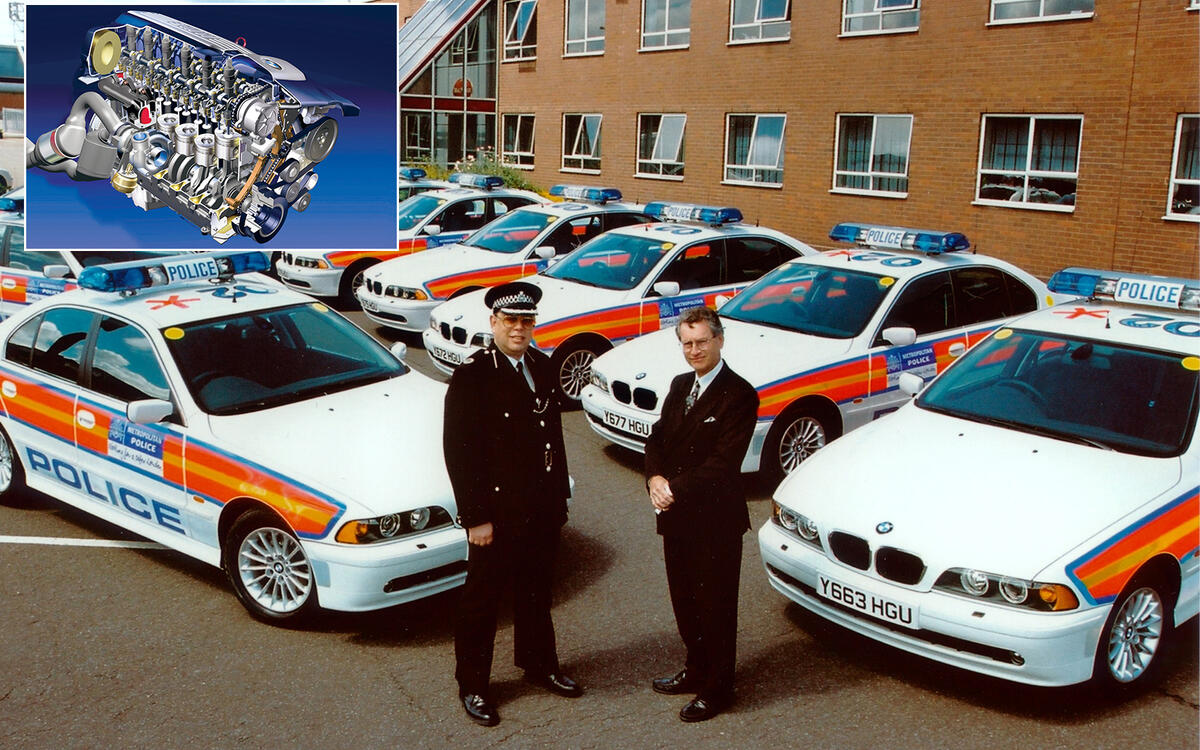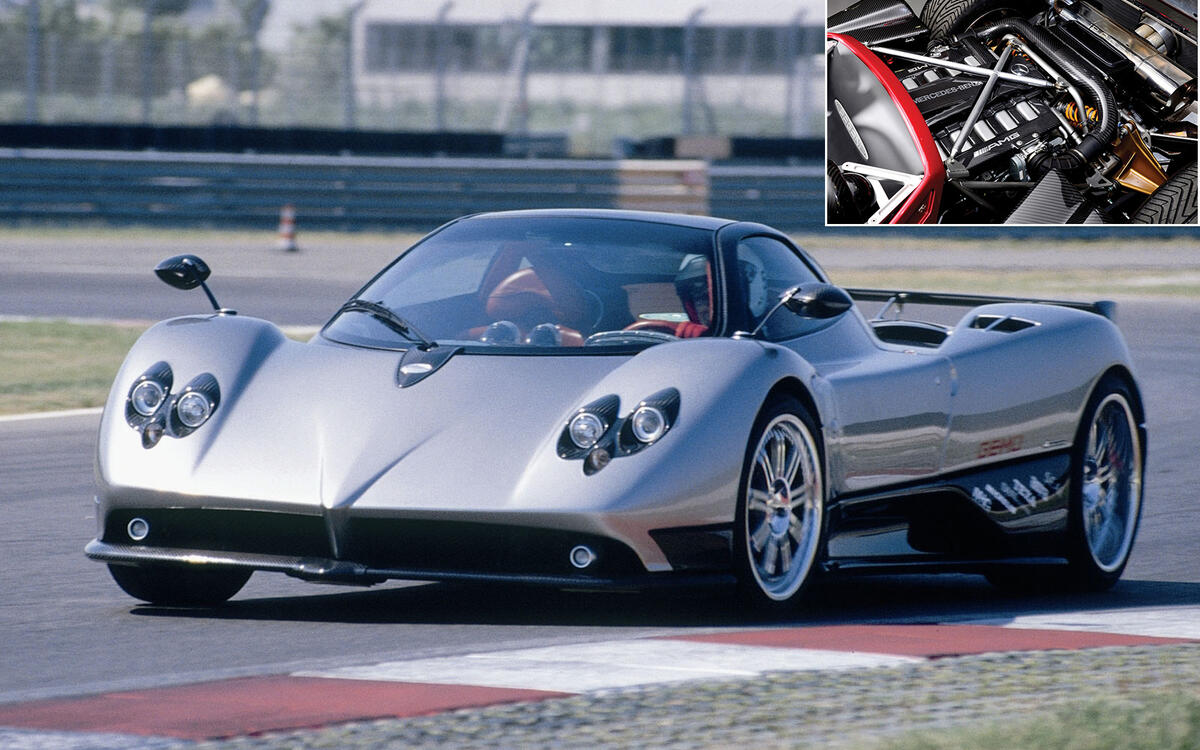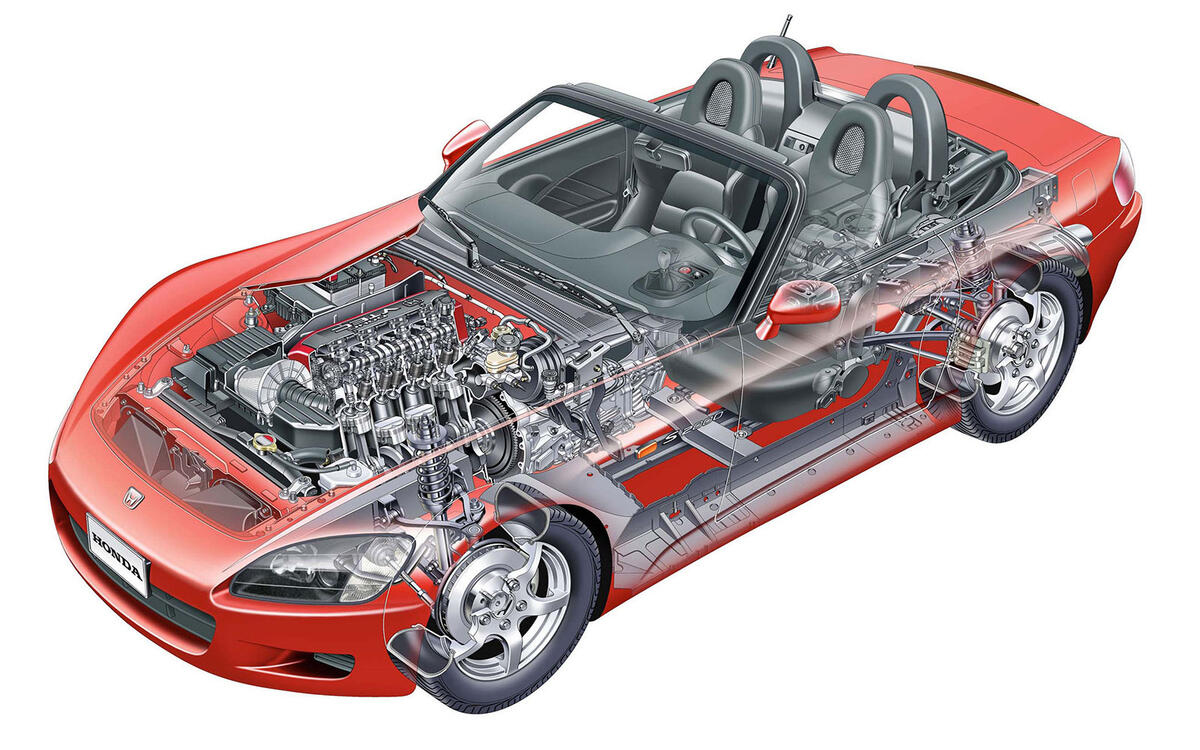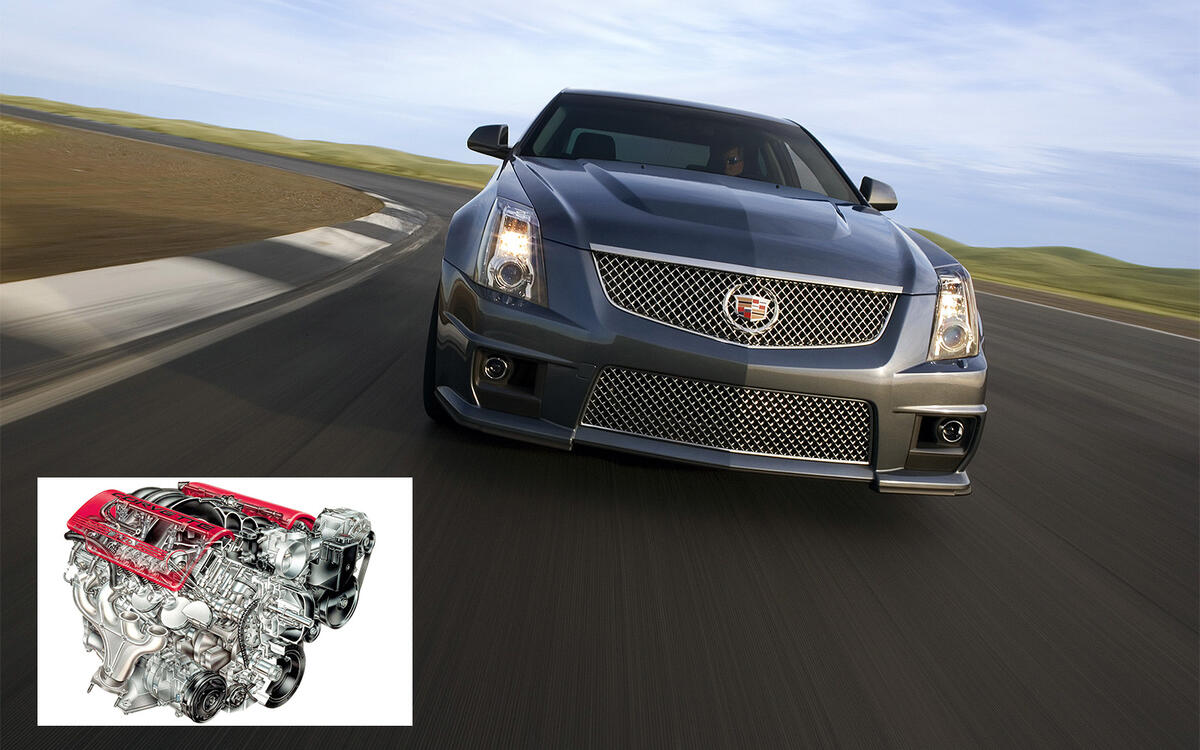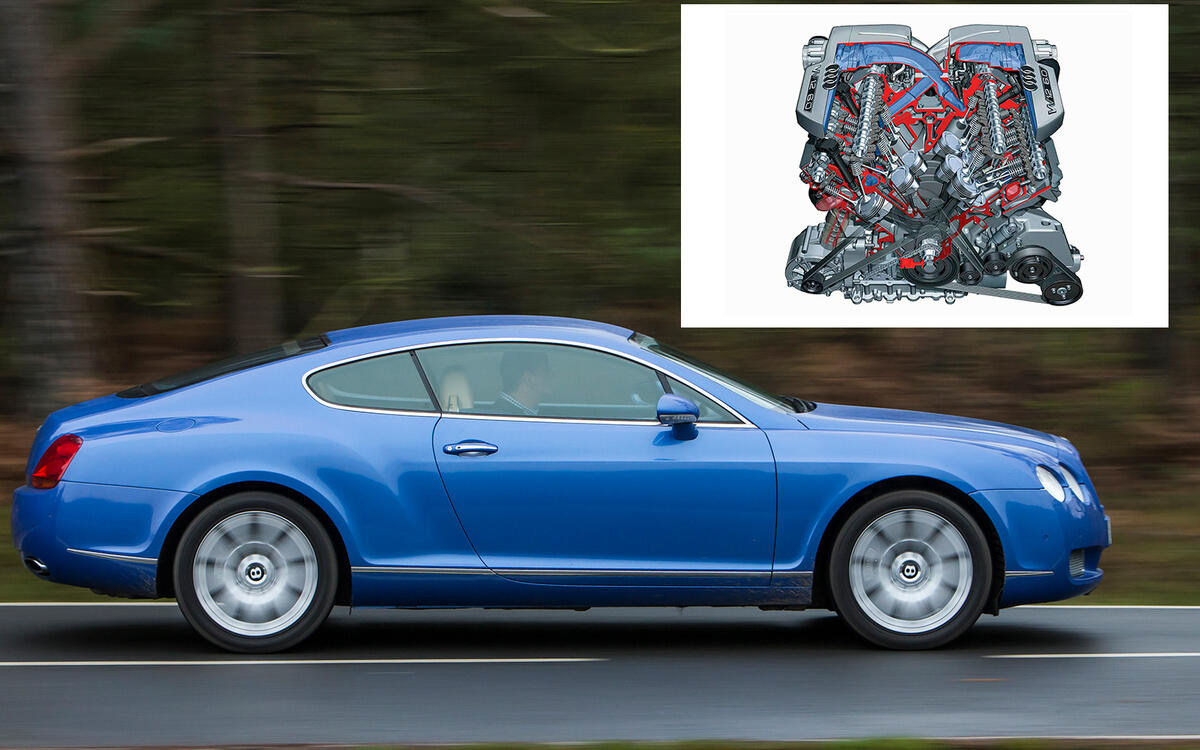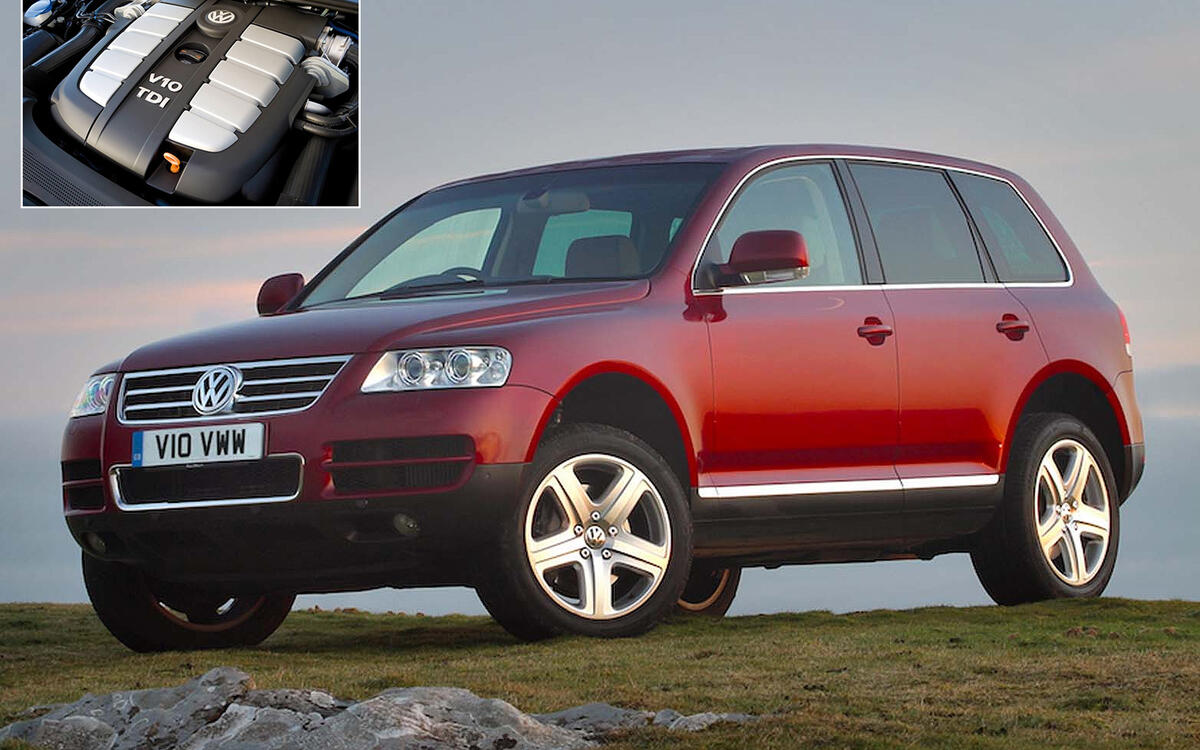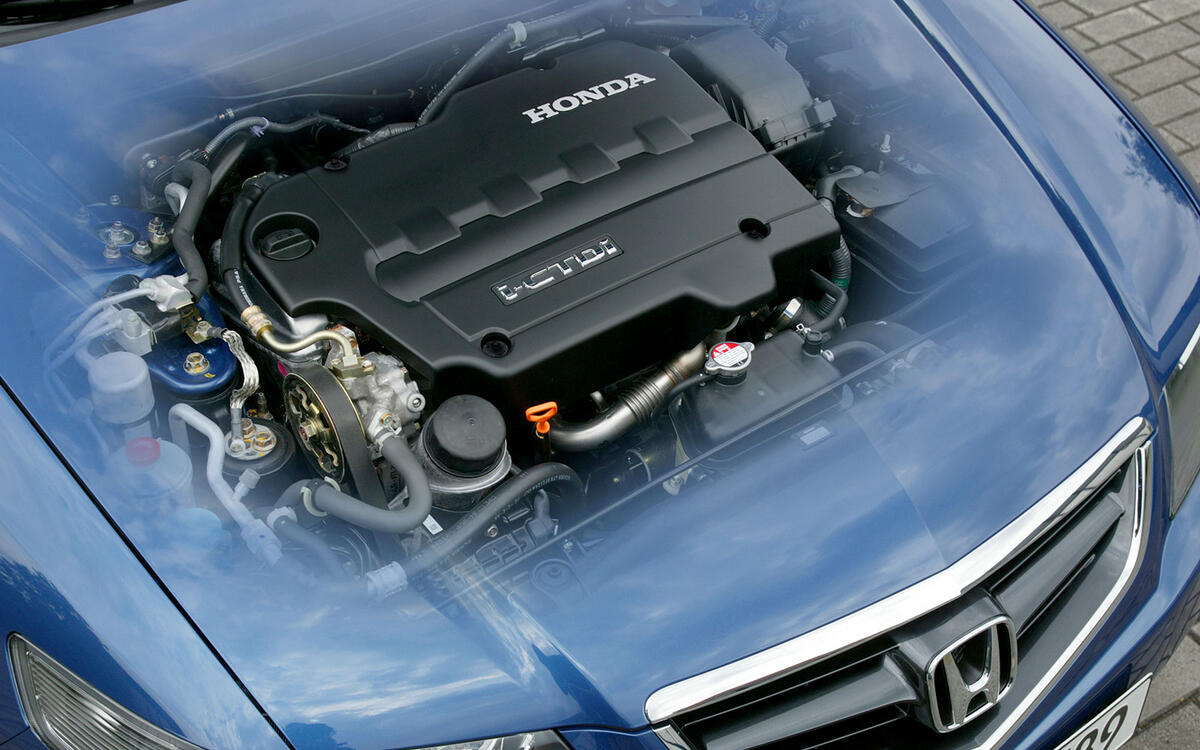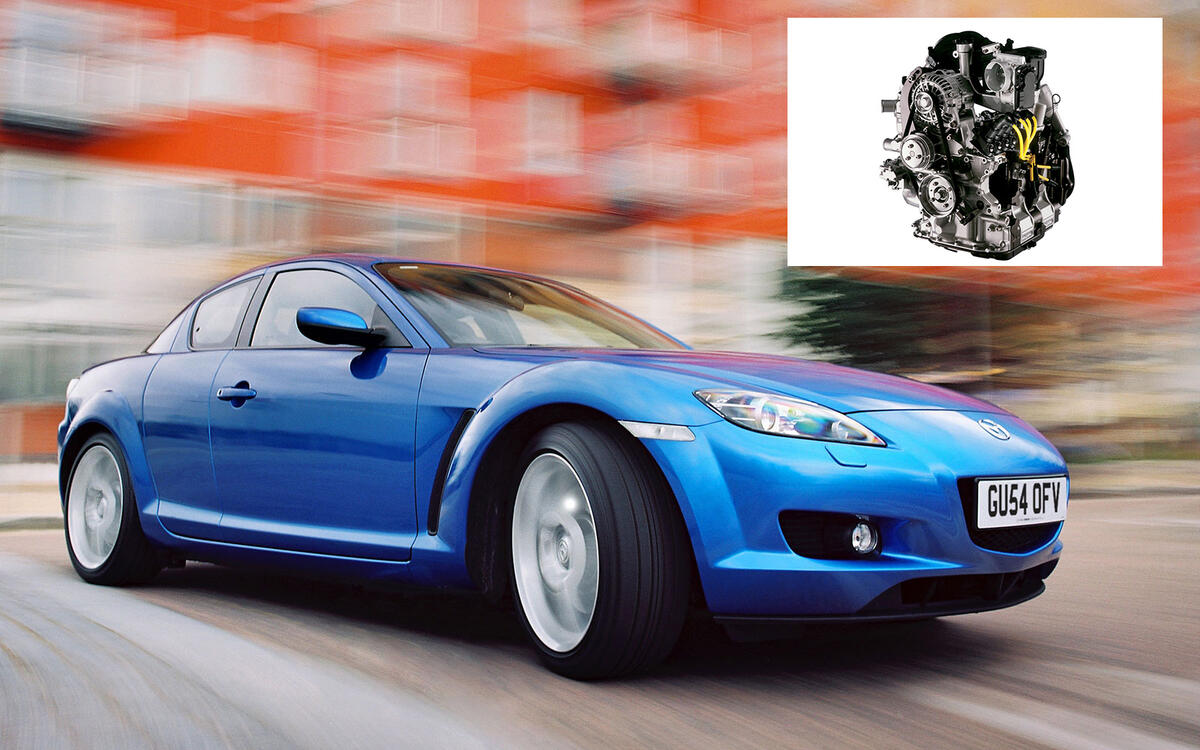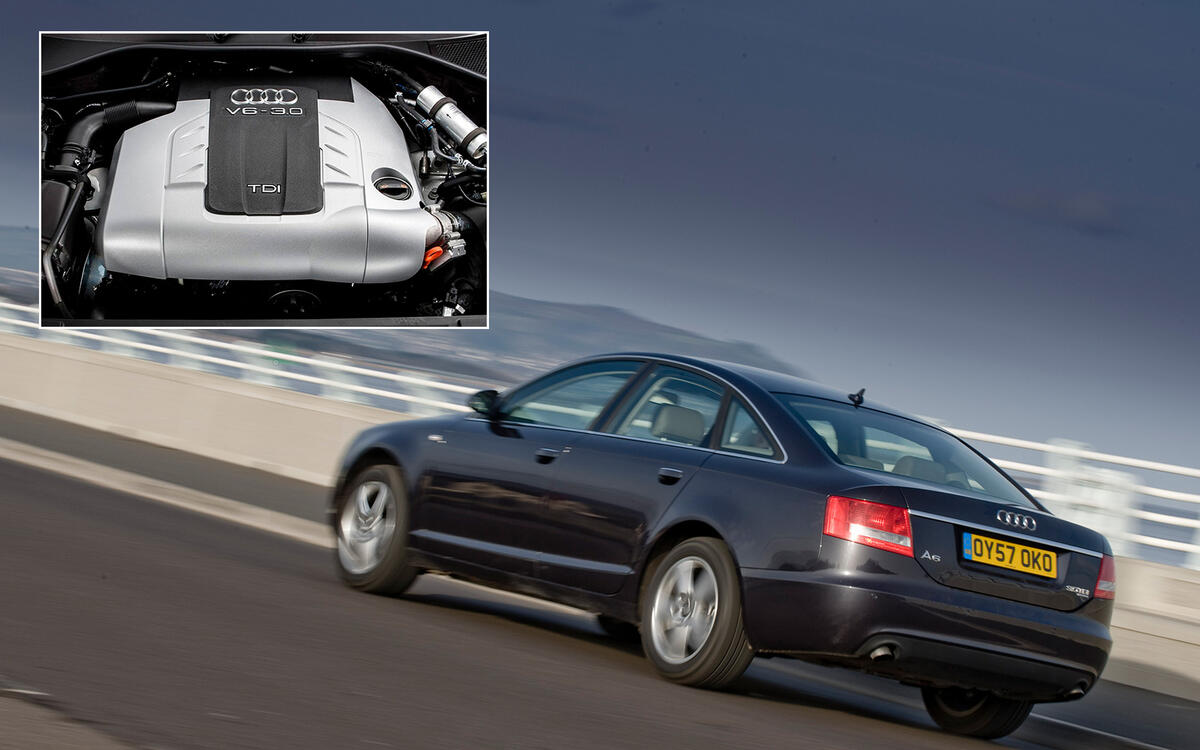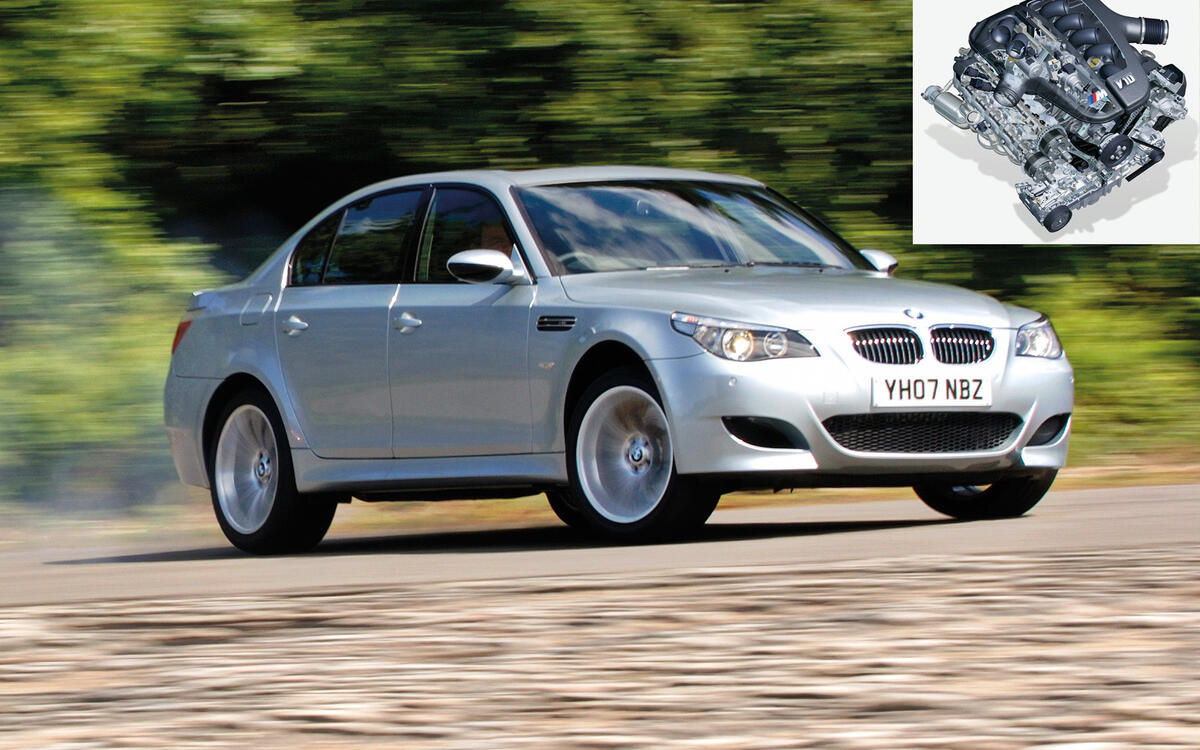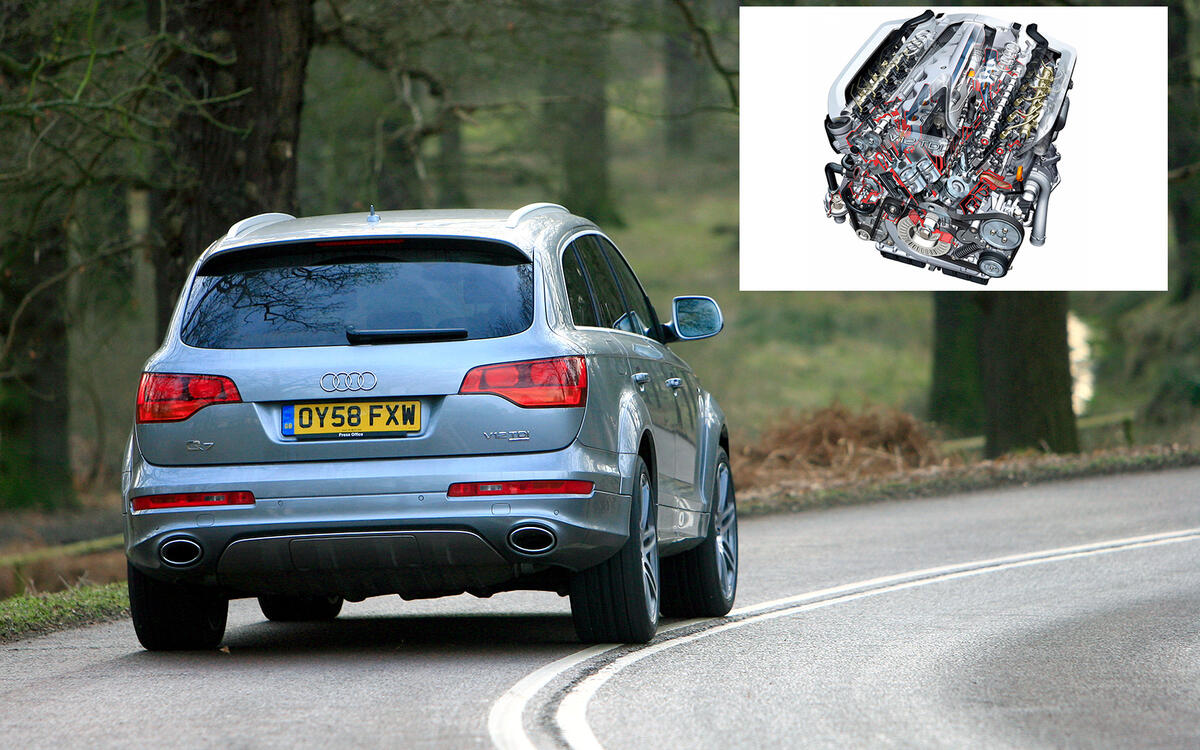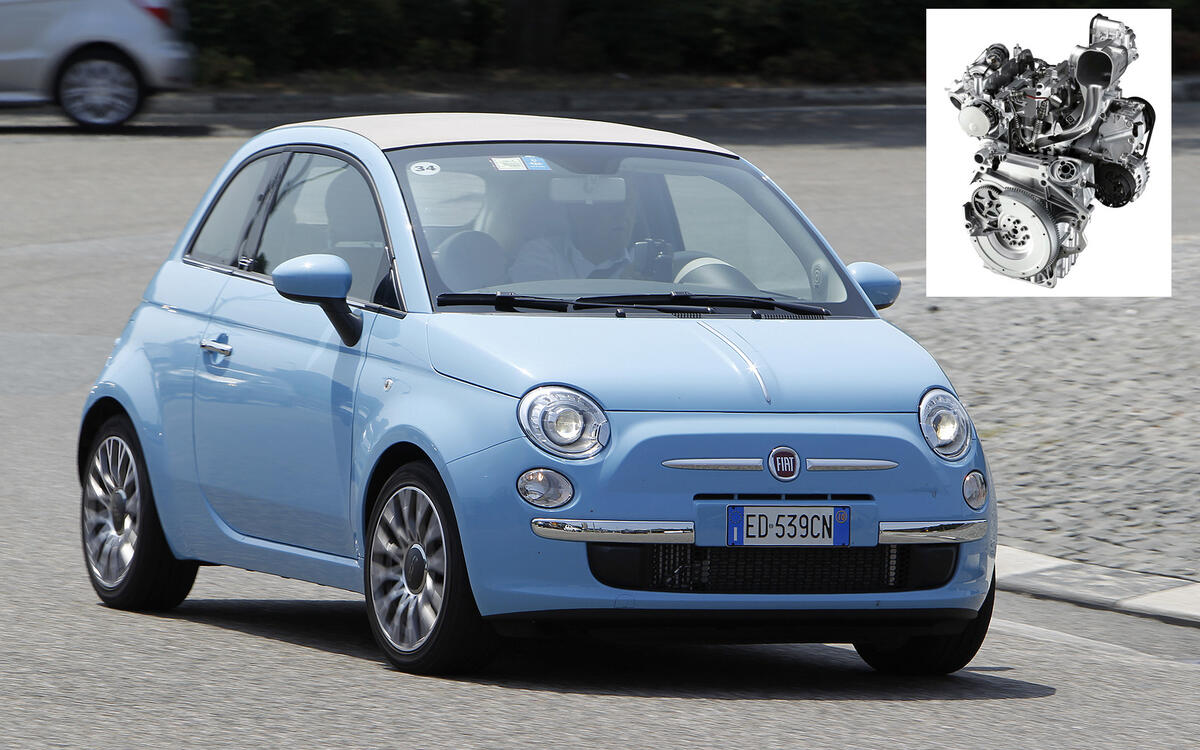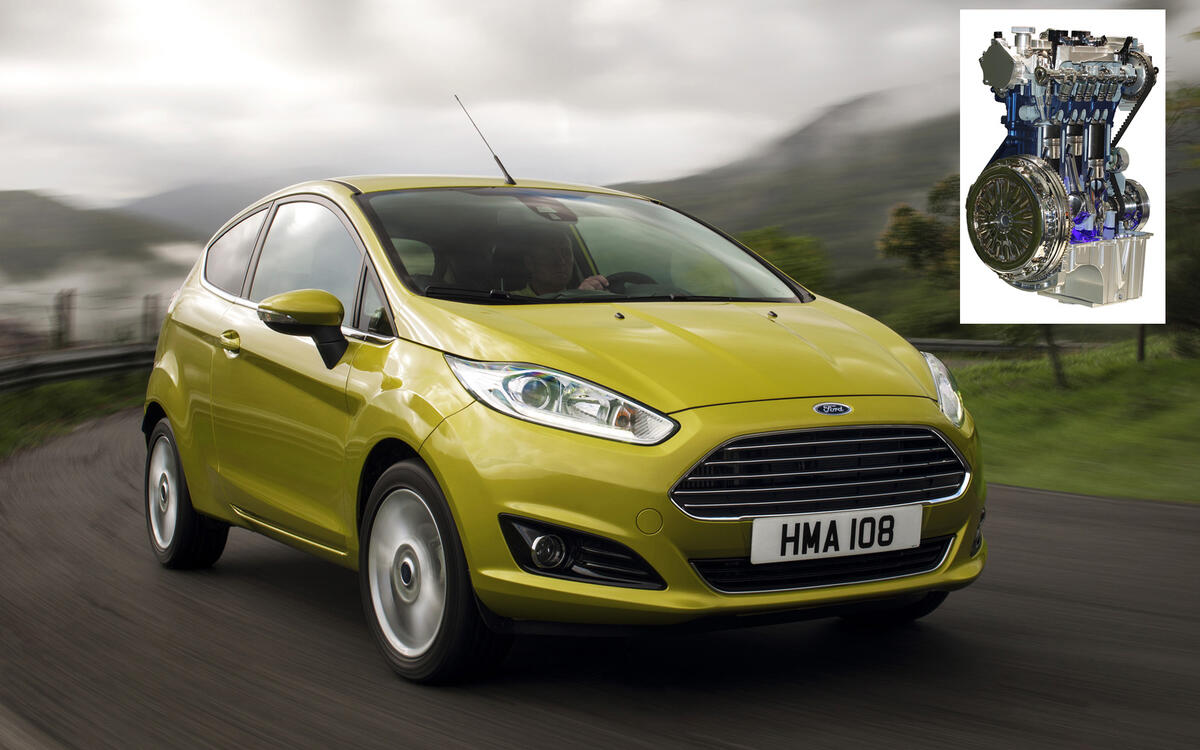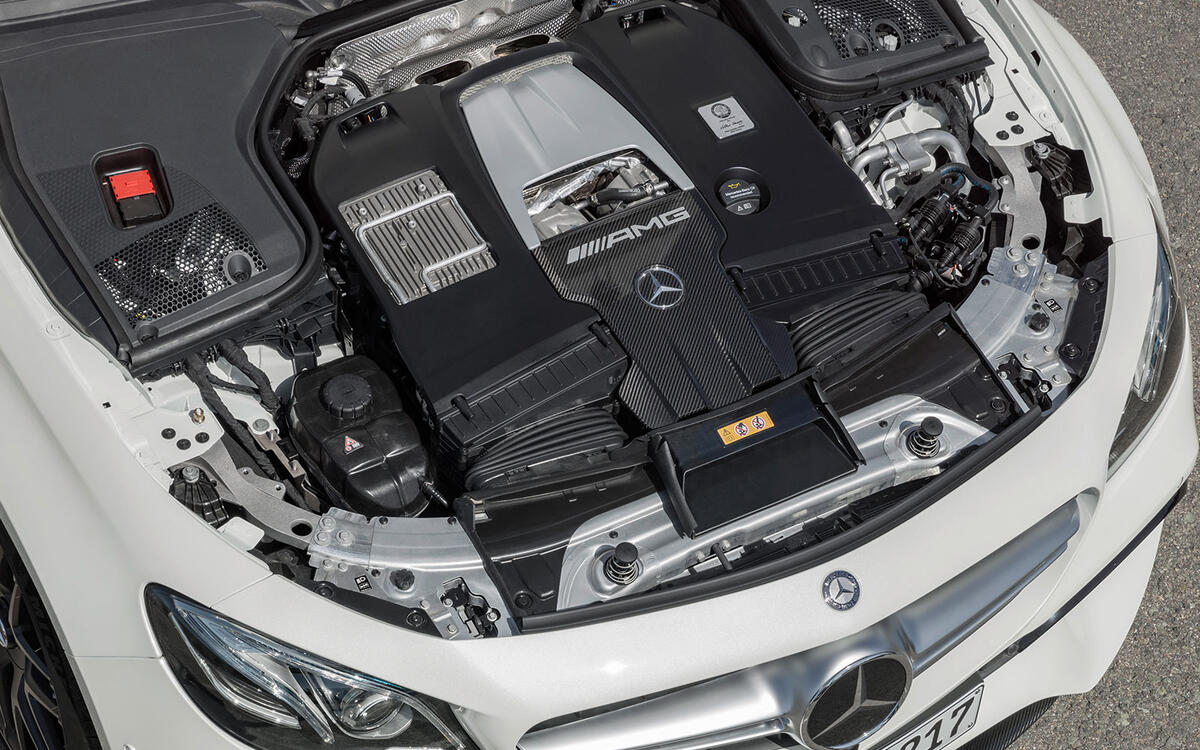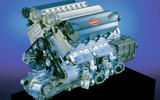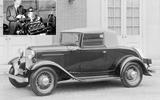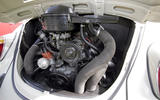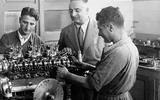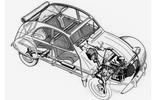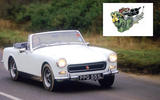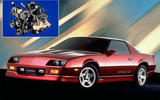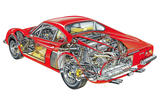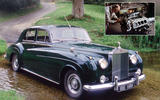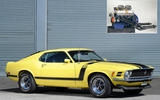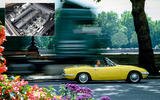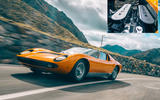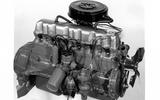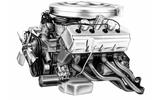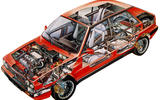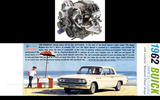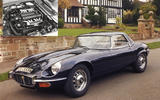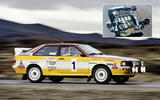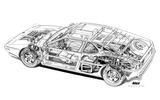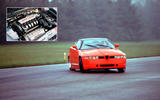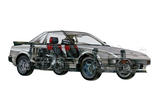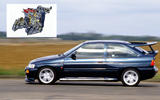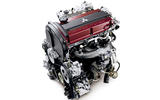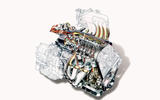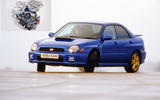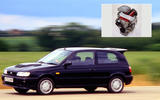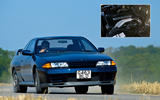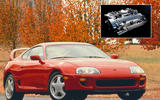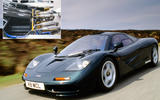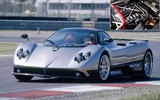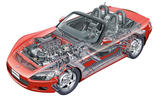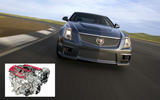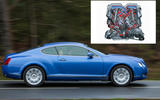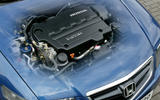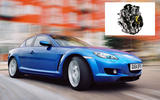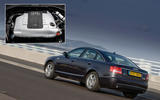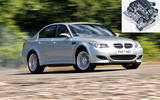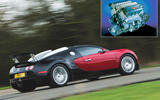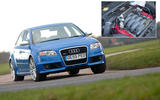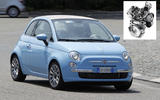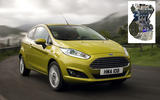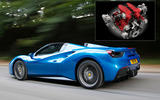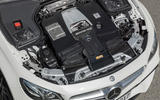 Slide of
Slide of
Defining the word 'greatest' isn't easy in this context.
After all, it could mean the biggest, the most powerful, the most relevant, the most exciting – or a combination of these things. So when choosing our 50 favourite road car engines, to be in with a chance of consideration each powerplant has to be either built in huge numbers, or really get our juices flowing – and ideally a combination of the two. Let’s take a look at what we reckon are the best, in chronological order:
 Slide of
Slide of
Ford flathead V8 (1932)
In the 1920s many family cars could barely crack 40mph. Then Ford introduced its flathead V8 and suddenly much greater numbers of car buyers could acquire a car that could sit at 60mph all day long. The flathead V8 wasn't all that efficient but it was simple, tough and reliable, which is why it remained in production in Ford's cars until 1954 but incredibly it was used in military trucks until the 1990s. It was the final major engineering contribution by Henry Ford (pictured) to his company.
 Slide of
Slide of
Volkswagen flat-four (1936)
The Beetle is one of the biggest-selling cars in history and every one of them was powered by an air-cooled flat-four. Initially it was an 1131cc unit, but by the time the final air-cooled Beetle was built this had swollen to 1584cc, although displacements of up to 2.0 litres were offered in the Type 4. The same engine powered the Type 2 camper and Transporter – and provided the basis for the Porsche 356's powerplant.
 Slide of
Slide of
Ferrari Colombo V12 (1947)
In a world of 2.0-litre four-cylinder engines, the idea of a 1.5-litre powerplant featuring 12 cylinders might seem utterly bonkers. But that was the spec of the first Ferrari engines; the 125 featured a 1497cc unit rated at 116bhp. By the time the Colombo-designed V12 bowed out in 1989, when the 412i was axed, the displacement had grown to 4.9 litres and the power output had jumped to 318bhp. Along the way we'd have numerous iterations of the 250, the 275 and the 365GTB/4, better known as the Daytona.
 Slide of
Slide of
Citroën flat-twin (1948)
There can be no denying that the Citroën 2CV (pictured) was a landmark car, and part of its charm was the noise generated by the brilliantly over-engineered air-cooled flat-twin that sat in the nose. Initially seen in 375cc form, later would come 425cc, 435cc and finally 602cc versions of this Gallic powerplant, which was also fitted to the Ami, Visa, Mehari, Dyane, Bijou and Acadiane.
 Slide of
Slide of
Jaguar XK (1948)
First seen in the XK120 of 1948, the Jaguar XK straight-six powered the E-Type, XJ, C-Type, D-Type and Mk1/Mk2 among others, with displacements running from 2.4 through to 4.2 litres. The XK engine gave Jaguar five victories at Le Mans and provided motive power for Coventry's finest right the way up to 1992, by which point almost 700,000 copies had been produced.
 Slide of
Slide of
BMC A-Series (1951)
In production for half a century (1951-2000), the A-Series engine was first used in the Austin A30 and went on to power a massive array of cars including the Morris Minor, Austin Healey Sprite and MG Midget (pictured), Austin Allego, Morris Marina, Austin Metro and all editions of the Mini. Easy to tune and offered in displacements from 803cc up to 1275cc (but expandable to a reliable 1380cc), the A-Series engine has been enjoyed by millions of drivers – including vast numbers of racers.
 Slide of
Slide of
Chevrolet small-block V8 (1954)
When Chevrolet introduced its small-block V8 in 1954 it probably didn't expect to build more than 100 million of them in a production run that would last all the way through until 2003 – although you can still buy one brand new if you want to. The powerplant was so called because of its size – it was far smaller than the Chevrolet big-block powerplants, despite the fact that the small-block displaced anywhere between 4.3 and 6.6 litres (262-400cu in). PICTURE: 1985 Chevrolet Camaro Iroc-Z28
 Slide of
Slide of
Ferrari V6 (1958)
Little more than a decade after Ferrari had burst on to the scene with its Colombo-designed V12, it introduced a 2.0-litre V6 designed by Vittorio Jano (1891-1960). First seen in 1958 and campaigned from 1959, the V6 would first be used in a road car in 1967, in the Dino 206GT. In that car the engine featured an aluminium block but in 1969 the displacement was increased to 2419cc and the block was made from cast iron, for the introduction of the Dino 246GT.
 Slide of
Slide of
Rolls-Royce V8 (1959)
Introduced way back in 1959 in 6230cc form, the Crewe V8 was fitted to the Rolls-Royce Silver Cloud and the Bentley S2. In 1970 the capacity was increased to 6750cc and it was in that form the engine remained in production for the next half a century. Flexible and massively torquey, the Rolls V8 is also capable of racking up inter-galactic mileages if it's looked after.
 Slide of
Slide of
Ford small-block V8 (1961)
Ford has built numerous V8s over the years, but we're starting here with the small-block that arrived in 1961 and which would be fitted to the Mustang from its launch in 1964. Nicknamed the Windsor, the V8 was built at that Ontario location until production moved to Cleveland in 1969, while the Windsor and Cleveland engines were produced alongside each other; the small-block survived until 2000 while the Cleveland was killed off in 1982. PICTURE: Ford Mustang Boss 302
 Slide of
Slide of
Lotus twin-cam (1962)
Lotus launched its all-alloy 907 twin-cam engine in 1973, but the original twin-cam is the one we're going with here. Based on the Ford Anglia 105E cast-iron block, Lotus developed its own twin-cam alloy head to create a brilliant 1.5- or 1.6-litre engine which made its debut in the Elan of 1962. Easy to tune and with 126bhp reliably and easily attained from the 1600 unit in big-valve form, the twin-cam engine was also fitted to the Lotus Cortina.
 Slide of
Slide of
Lamborghini V12 (1963)
When Lamborghini burst onto the scene in 1963 it was with the 350GTV that was powered by a 3465cc V12 designed by Giotto Bizzarrini (born 1926, and yes still alive today, aged 93). That engine powered every V12 Lamborghini right up until the Aventador of 2011; the Miura (pictured), Countach, Diablo, Murcielago and numerous other GTs featured it. By the time the final Bizzarrini-designed Lambo V12 was built, the displacement had swollen to 6.5 litres.
 Slide of
Slide of
Porsche air-cooled flat-six (1963)
In production for an incredible 35 years (from 1963 until 1998), the air-cooled flat-six powered all Porsche 911s until the arrival of the 996. The initial displacement was just two litres, but this rose to 2.2 litres in 1969, then three litres and ultimately to 3.3 litres in turbocharged form, before the air-cooled six was superseded by a water-cooled unit in the quest for more power.
 Slide of
Slide of
AMC/Jeep 'six' (1964)
When AMC launched its in-line six in 1964 it probably didn't think that more than four decades later it would still be in production. Initially displacing 3.8 litres (232cu in), within a year there was a 3.3-litre (199cu in) version. When Chrysler bought AMC in 1987 this straight-six engine was part of the deal and it would go on to power an array of Jeep models until its demise in 2006 – by which point the unit had built a reputation for being pretty much indestructible.
 Slide of
Slide of
Chrysler Hemi (1966)
Chrysler has produced three different Hemi engines; it's the second one that we're interested in here. Offered only between 1966 and 1971, the Hemi took its name from the hemispherical combustion chamber design. Chrysler chose this so it could fit the biggest valves possible, because under NASCAR rules only two were allowed to be fitted for each cylinder.
 Slide of
Slide of
Fiat twin-cam (1966)
Designed by ex-Ferrari boffin Aurelia Lampredi (1917-1989), the Fiat twin-cam engine was fitted to a huge number of Fiat, Alfa Romeo and Lancia models. First seen in the Fiat 124 of 1966, in 1297cc form, the twin-cam was also available in most Fiats and Lancias of the seventies and eighties, including the all-conquering Lancia Integrale (pictured).
 Slide of
Slide of
Rover V8 (1967)
Developed in the late 1950s by Buick (pictured), this 215cu in (3.5-litre) V8 was light, compact and powerful, but not especially reliable or cheap to make. Rover then bought the rights to produce the engine which was first fitted to the Rover P5 in 1967; it would go on to power an array of Rover, Land Rover, MG, Triumph, Morgan, TVR and Marcos models (among many others) before the final example was built in 2006 – by which point it had grown to displace up to five litres and become much more dependable.
 Slide of
Slide of
Aston Martin V8 (1969)
When Aston Martin launched the DBS in 1967 it was supposed to be fitted with a V8, but the new engine wasn't ready in time so it would be another two years before the DBS V8 would go on sale – and delivered quite a transformation. The Tadek Marek-designed powerplant was the making of the heavyweight Aston, the quad-cam 5340cc V8 pushing out about 400lb ft of torque along with 350bhp – although these would ultimately rise to as much as 600lb ft and 600bhp in the twin-supercharged Vantage V600.
 Slide of
Slide of
Jaguar V12 (1971)
Surprisingly few car makers have ever offered a V12 engine. In the post-war era it was mainly Ferrari and Lamborghini that offered them, but in 1971 Jaguar switched from a straight-six to a 5.3-litre V12 in the E-Type; a year later the same unit was available in the XJ saloon. Incredibly smooth and durable (if maintained properly), the Jag V12 was truly a landmark engine which remained in production until 1997, in 6.0-litre form.
 Slide of
Slide of
Audi five-cylinder (1976)
One of the greatest things about the Quattro (a car with quite a repertoire of great things, pictured) was the beat from its turbocharged five-cylinder engine – a powerplant that made its debut in naturally aspirated form in 1976. Known internally as the Type 43, it was the Audi 100 5E that got the 2.1-litre five-pot engine first, in naturally aspirated 135bhp form. By 1989 the same engine in turbocharged form was putting out over 700bhp in US touring car guise – that was the same year that Audi introduced the world's first five-cylinder diesel engine.
 Slide of
Slide of
BMW M88 (1978)
BMW is famed for its straight-six engines, which it's stuck with when most rivals have opted for more compact V6s instead, which are invariably less smooth and feature a less rousing soundtrack. BMW's M30 six-pot powered the iconic 3.0 CSL and was a brilliant powerplant, but things got even better when a four-valve head was fitted to create the M88 engine, as seen in the BMW M1 as well as the original (E28) M5.
 Slide of
Slide of
Alfa Romeo Busso V6 (1979)
Designed in an era when an engine bay was worth looking at, this charismatic V6 engine from Alfa Romeo was designed by Giuseppe Busso (1913-2006), and fitted to a huge array of models including the 147, 156, Spider, 75, SZ (main picture) and more. With its polished inlet manifolds and sonorous soundtrack, you could forgive any Alfa Romeo its likely litany of build quality problems every time you explored the redline. Production ran until 2005, by which point displacements had varied between two and 3.2 litres.
 Slide of
Slide of
PSA XUD (1982)
Peugeot and Mercedes were just a few weeks apart in introducing the first diesel-engined passenger car in 1936, so the French brand knows a thing or two about building great compression-ignition powerplants. Launched in 1982, the XUD engine remained in production for almost two decades and came with displacements of 1.8, 1.9 or 2.1 litres. This engine was fitted to cars as diverse as the Peugeot 205, Talbot Horizon, Lada Niva and FSO Polonez – as well as the Peugeot 405/406 and Citroën Xantia.
 Slide of
Slide of
Toyota 4AGE (1983)
Toyota has created a raft of impressive engines over the years. We've opted for the unit that was so brilliant in the original MR2, as well as the legendary AE86 Corolla. The twin-cam 4AGE engine displaced just 1.6 litres and generally put out about 120bhp in naturally aspirated form. As such it was light, compact and full of fizz.
 Slide of
Slide of
Ford/Cosworth YB (1986)
The Pinto unit was Ford's first engine to feature a belt-driven overhead camshaft. Launched in 1970 in the Cortina Mk3 and Taunus, the Pinto engine was developed by Cosworth into the turbocharged, multi-valve double overhead-cam monster seen in the Sierra RS Cosworth and later on the Escort RS Cosworth (pictured). Road cars could draw upon a relatively tame 201bhp – but in racing form more than 600bhp could be extracted from this 2.0-litre unit.
 Slide of
Slide of
Mitsubishi 4G63 (1987)
The Mitsubishi Evo was nothing less than a weapon on the rally stages and it was pretty good on a fast, winding road too. Its super-natural abilities were down to the fitment of standard four-wheel drive, a stack of electronics – and a turbocharged twin-cam 2.0-litre four-cylinder engine that could reliably produce around 300bhp. Known as the Sirius, it was this engine that was fitted to all Evos apart from the final edition, the Evo X, which got its own powerplant.
 Slide of
Slide of
Honda B-Series (1988)
Honda has produced a whole raft of rev-happy engines that lead the way when it comes to reliability, and in many cases efficiency too. But it was the B-Series that introduced us to Honda's brilliant VTEC (Variable Valve Timing and Lift Electronic Control) system. Not all B-Series engines got VTEC and this tech was fitted to a raft of other Honda powerplants including the K-Series and R-series – but it was the B-Series that changed things forever.
 Slide of
Slide of
Subaru flat-four (1988)
Subaru built its first flat-four engine in 1966. That unit, known as the EA, would last until 1994, by which point the 16-valve EJ had been introduced. Launched in 1988, the EJ boxer engine was what gave the Impreza Turbo its characteristic beat. Strong, easily tuned, incredibly reliable and with a low centre of gravity, the EJ engine is still in production and will hopefully remain so for a while yet.
 Slide of
Slide of
Nissan SR20DET (1989)
As with most Japanese car makers, Nissan has produced a string of highly tuned turbocharged engines over the years, proving that there can be a substitute for cubic inches. Typically tuned to give around 100bhp/litre, the twin-cam SR20DET powerplant was first fitted to the home-market Bluebird in 1989, but is globally best known for powering the Sunny GTi-R as well as the Silvia/180SX/200SX.
 Slide of
Slide of
Nissan RB26 (1989)
Nissan introduced the RB in 2.0-litre straight-six form in 1985 and production of the 3.0-litre RB30 lasted until 2004. Many reckon that the 2.6-litre RB26 was the sweet spot, as seen in the R32 GT-R. With four valves per cylinder, two turbos and six throttle bodies the engine was officially rated at a conservative 276bhp, although 325bhp was a given – and more than twice this could be reliably extracted from the RB26 engine.
 Slide of
Slide of
Toyota 2JZ-GTE (1991)
Japanese car makers choose confusing designations for their engines, but that matters not when you've got an intercooled double overhead-cam straight-six with sequential turbochargers, which will give a reliable 700bhp and which can be tuned to produce over 1000bhp. So with just 300bhp or so on tap in regular production form as seen in the Toyota Supra A80 (pictured), the 3.0-litre 2JZ-GTE engine barely broke into a sweat.
 Slide of
Slide of
McLaren F1 (1992)
There was so much more to the McLaren F1 than just its engine, but the BMW-supplied 6.1-litre V12 was something of a high spot. McLaren had originally tried to collaborate with its Formula 1 engine supplier Honda, which was asked for a 550bhp engine to power a forthcoming supercar. Honda couldn't commit so McLaren asked BMW instead – and the result was a powerplant with 77bhp more than requested.
 Slide of
Slide of
Mercedes OM606 (1993)
The Mercedes engine back catalogue contains some pretty impressive entries, but this is one of our favourites; a 3.0-litre straight-six with twin overhad camshafts and four valves per cylinder. Initially seen in naturally aspirated form in the W124 E-Class, the OM606 was then fitted to the next-generation E-Class, the W210, in turbocharged form. Smooth, indestructible and effortlessly torquey, the OM606 also found its way into the W140 S-Class (pictured) as well as the W463 G-Class.
 Slide of
Slide of
BMW straight-six diesel (1999)
Even before the arrival of the original 530d, BMW had built some fabulous diesel engines, most notably the 2.5-litre straight-six seen in the 325tds and 525tds of the 1980s. But it was this unit that really put BMW on the map for great diesel engines; the first 530d was fast, sounded great and was decently parsimonious too yielding huge single-tank ranges, all of which quickly made it a police car of choice throughout Europe.
 Slide of
Slide of
Pagani V12 (1999)
We all know that the original Pagani featured an engine that was built by Merc's AMG division, but so what? It was still a monster of a powerplant which initially displaced six litres and 444bhp; this rose to seven litres before peaking at 7.3 litres and a faintly ludicrous 789bhp. The Huayra sticks with an AMG V12, but whereas the Zonda got Merc's epic M120 powerplant its successor has the twin-turbo M158 unit.
 Slide of
Slide of
Honda F20C (2000)
We could easily have included the K20 unit that Honda fitted to the Civic Type R, but we've opted for the F20 unit that was fitted to the S2000 because it was such a cutting-edge powerplant. Capable of revving to a motorbike-like 9000rpm, the naturally aspirated 2.0-litre F20 could generate a massive 247bhp, which meant it had the highest specific power output (bhp per litre) of any engine until the Ferrari 458 came along. A bit more low-down torque wouldn't have gone amiss though.
 Slide of
Slide of
GM LS6 (2001)
We've already had one GM small-block V8 and here's another, although the two aren't related. The LS6 was based on the LS1 that arrived in 1997 to power the Corvette C5. This unit was then developed into the more powerful LS6 specifically for the Corvette Z06, although it would also find its way into the Cadillac CTS-V (pictured). Initially rated at 385bhp from 5.7 litres, power rose to 405bhp before the LS7 took over in 2006.
 Slide of
Slide of
VW Group W12 (2001)
When it comes to weird engine configurations, the Volkswagen Group is the master. It's produced the narrow-angle VR6, a V5, the W8 and in the Bugatti Veyron/Chiron there's been a W16. Only slightly less mad than that is the W12 which was created by mating a pair of VR6 powerplants to come up with a 6.0-litre unit. First seen in the 2001 W12 coupé concept, that year also saw the first production car application: the Audi A8. The W12 engine would go on to be fitted to the Bentley Continental GT (pictured) as well as Volkswagen's Touareg and Phaeton.
 Slide of
Slide of
Volkswagen V10 TDI (2002)
Fitted only to the Touareg and Phaeton, the Volkswagen 5.0-litre 10-cylinder diesel engine was a beast of a powerplant with its minimum of 553lb ft of torque – in the Touareg R50 (pictured) this was boosted to a mammoth 627lb ft. Production ran from 2002 until 2009 and because the cost of building these engines was so high, few cars were ever sold with one fitted.
 Slide of
Slide of
Honda i-CTDi (2003)
For years Honda vowed that it would never make its own diesel engine, but it finally relented in 2003 when it introduced a 2.2-litre all-aluminium oil-burner for the Accord. And what a smooth masterpiece it was! With a much lower compression ratio than normal, of 16.0:1, the N series engine was also far quieter and cleaner than rivals, while that alloy construction ensured it was lighter too.
 Slide of
Slide of
Mazda Renesis (2003)
Decades after everybody else had given up on rotary power, Mazda was still persisting with it in its brilliant RX-8 (pictured). The company largely overcame the reliability problems (up to a point), but it couldn't fix the poor fuel economy or the appetite for oil. The Renesis engine also lacked torque but we've included it here because it was light, compact, and brilliantly smooth – plus Mazda should be applauded for doing something different.
 Slide of
Slide of
VW Group 3.0 TDI (2004)
You've probably spotted that there aren't many diesel engines in this list, not because we don't rate them but because some have been squeezed out by petrol units that we love – or that we think are more significant. One that couldn't be omitted was this jewel of a V6 engine that was first used in the Audi A8 and which went on to be fitted to the A4, A6, Touareg, Phaeton and more. Smooth, frugal and fabulously muscular it really was a landmark engine.
 Slide of
Slide of
BMW V10 (2005)
Aside from the occasional V12 luxury car, the maximum number of cylinders in most sports cars and GTs is eight – so BMW had to go two better with its V10. Codenamed S85 and seen in the E60 M5 (pictured)as well as the E63 M6, the V10 was thirsty and could self-destruct if not mollycoddled, but when it comes to epic soundtracks and phenomenal power delivery this was an intoxicating powerplant, no question.
 Slide of
Slide of
Bugatti Veyron (2005)
Any engine that features 16 cylinders and four turbos has to be worthy of inclusion here, just because it's such a ridiculously over the top concept. The first Veyrons packed a 987bhp punch, but owners clearly felt embarrassed by such a trivial number which is why Bugatti turned up the wick in 2010 with the introduction of the 1184bhp Veyron Super Sport.
 Slide of
Slide of
Audi V12 TDI (2006)
Admittedly Audi's 12-cylinder diesel engine proved to be something of a cul de sac – but we still salute the company for doing something quite so bonkers. Developed by quattro GMBH, Audi's in-house performance division, the V12 TDI engine displaced six litres and was used in the Le Mans-winning R15 TDI – and it was fitted to a handful of Q7s too. Rated at 473bhp and 737lb ft of torque (the latter from just 1750rpm), this monstrous SUV could do 0-62mph in just 5.5 seconds and achieve 23.7mpg on the combined cycle.
 Slide of
Slide of
Audi RS4 (2006)
The original Audi RS4 was a twin-turbo V6 affair and it was okay as far as practical performance cars go. But it was the second take on the formula that really got us foaming at the mouth, because the B7-based RS4 featured a naturally aspirated 4.2-litre V8 that was nothing less than stunning with its power delivery and soundtrack. Capable of revving to a lovely 8250rpm, the RS4's engine was rated at 414bhp which was sent to all four wheels via Audi's quattro transmission.
 Slide of
Slide of
Fiat TwinAir (2010)
We were a bit hesitant about including this one. After all, the TwinAir unit is an 875cc two-cylinder turbocharged powerplant that often struggles to return more than 35mpg when fitted to the Punto, Panda or 500. But the fact that the TwinAir engine has so much character and plenty of pep are both cause for celebration, so what the hell…
 Slide of
Slide of
Ford 1.0 Ecoboost (2012)
In a bid to boost efficiency, car makers have put a raft of turbocharged 1.0-litre three-cylinder petrol engines into production, and one of the first was Ford's Ecoboost unit, used first in the Fiesta (pictured). Compact, light, smooth and fabulously zesty, the Ecoboost engine can also be brilliantly frugal if it isn't maxed at every opportunity – which it's very easy to do as it comes with an engine thrum that puts many four-cylinder units to shame.
 Slide of
Slide of
Ferrari V8 (2014)
Ferrari hasn't always made the best-looking or sweetest-handling cars, although its hit rate tends to be rather higher than rivals can manage. Where it has managed to be astonishingly successful is with its engines, which have tended to offer sparkling performance with a scintillating soundtrack. That's definitely true of the F154 twin-turbo V8 that arrived in 2014. Drive a 488 (488 Spider pictured) or F8 and this engine will show you that naturally aspirated isn't necessarily best, with its incredible flexibility and phenomenal punch from barely above idle.
 Slide of
Slide of
Mercedes-AMG V8 (2015)
Mercedes has produced some epic naturally aspirated V8 engines over the years, and we could have picked pretty much any one of them for inclusion here. But instead of a non-boosted 6.2-litre unit we've opted for the current twin-turbo 4.0-litre unit because it's just so damned accomplished. It's flexible, tractable, stupendously powerful yet ultra-clean too. Its predecessors might be impressive but the M176 V8 proves that the fun needn't be over just because of modern emissions regulations.
If you enjoyed this story, sign up to Autocar’s newsletter for all the best car news, reviews and opinion direct to your inbox. Click here to subscribe.
We've picked 50 of our favourite road-going engines, but we could easily have selected twice as many…
Advertisement

